What is Affinity?
Affinity, Robots, 8Cast, whatever you’d like to call it, Affinity is an Artifact based creature beatdown deck that takes advantage of its namesake mechanic to swarm the board with cheap creatures. It utilizes the abundance of Artifact synergies and support cards that have been printed over the years to mitigate the traditional weak spots of aggressive decks that tend to run out of gas early on, packing tons of additional draw power into the deck to keep the onslaught of creatures coming. It then looks to wrap up the game by either going tall – making one creature into a game ending threat thanks to Cranial Plating and other similar cards, or by going wide – creating an overwhelming boardstate and using mass pump effects to turn all of its dinky little guys into real threats and overwhelm the opponent’s board state and removal.
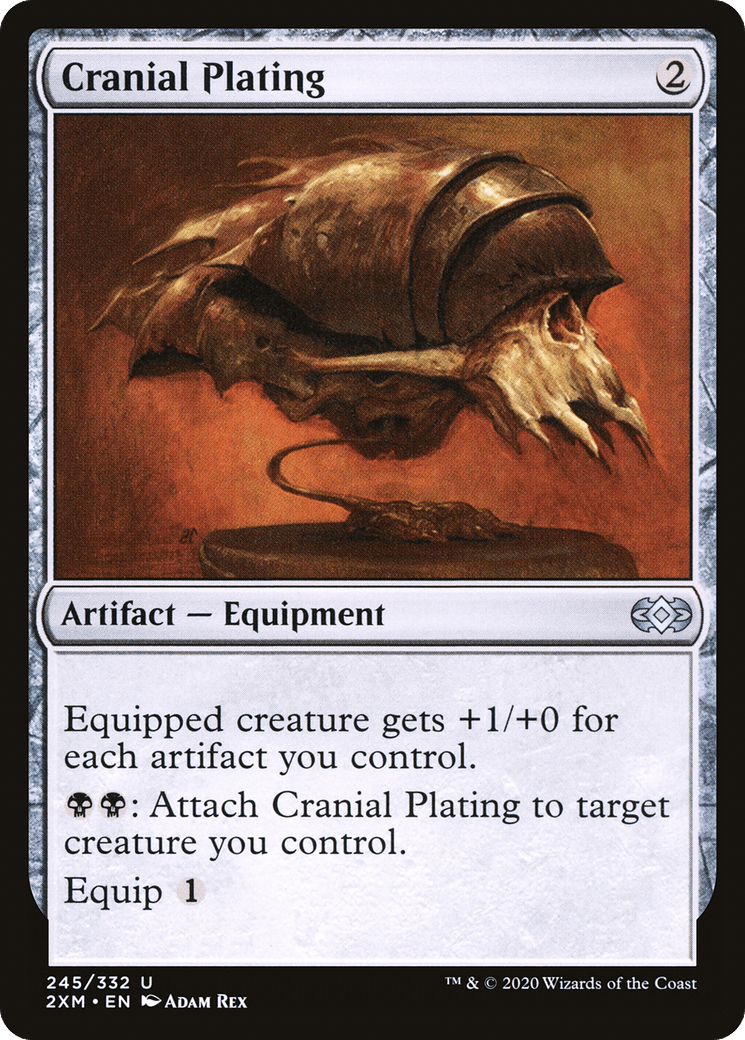
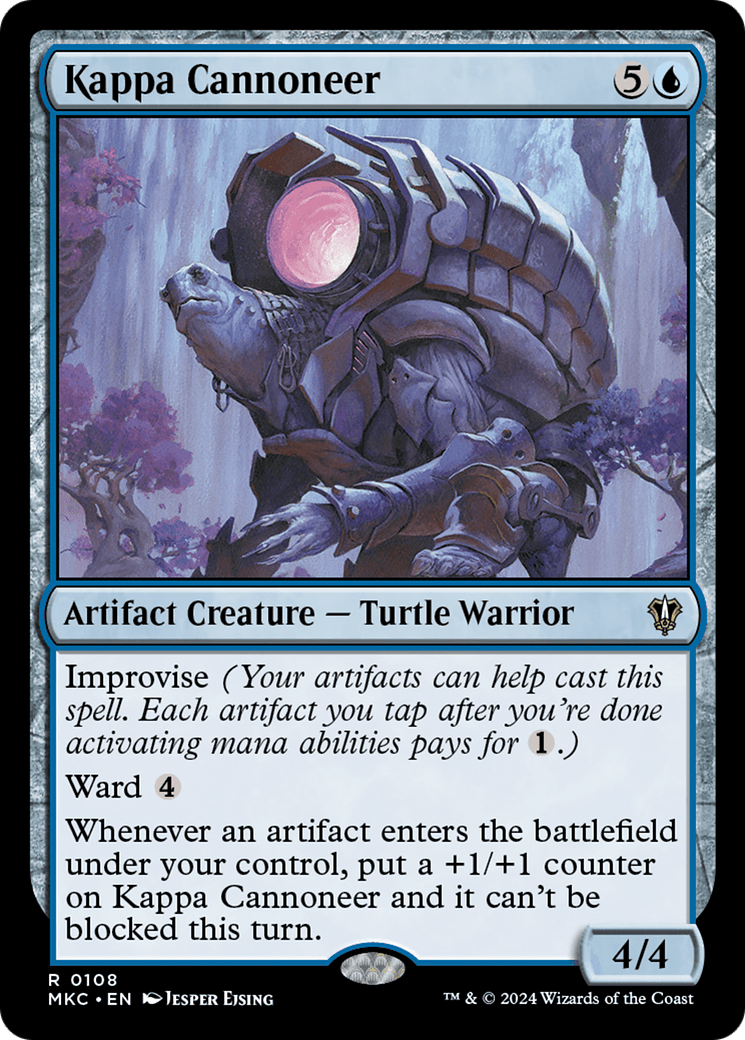
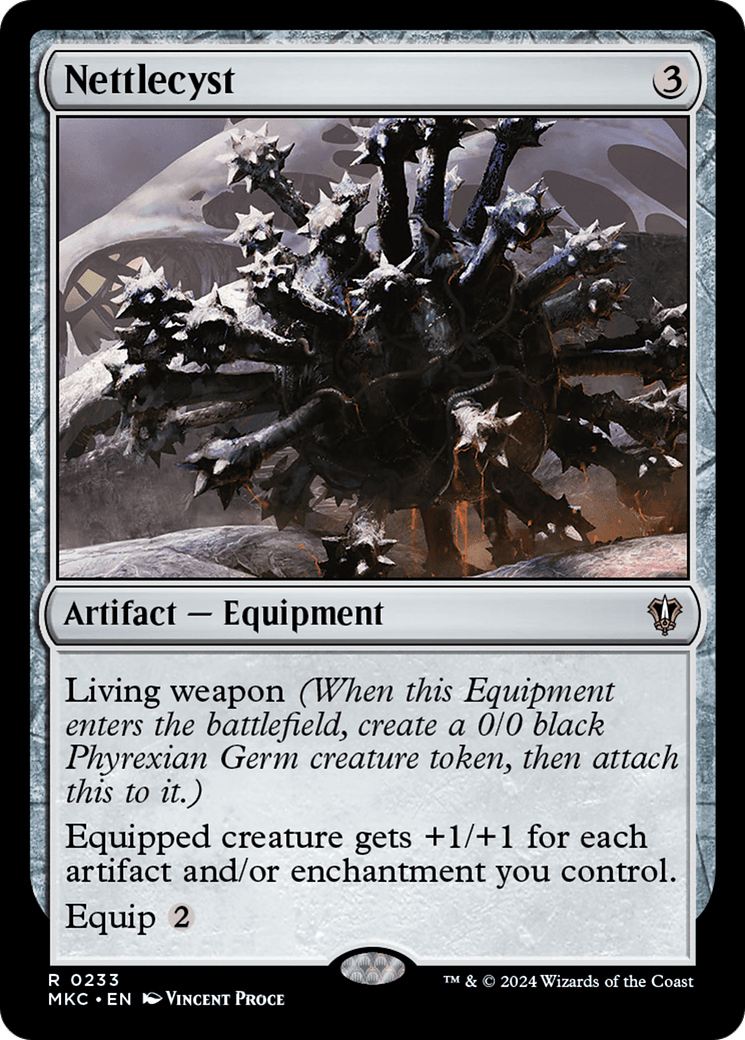
Because of the way that Affinity works, the deck is extremely mana hungry, though also able to feed itself extremely well. Reducing costs by counting Artifacts means that any Artifact you can produce that inherently makes mana (Springleaf Drum, Seat of the Synod etc) produces double that mana, and that’s the real bit that we’re looking to capitalize on and take advantage of. Affinity works like a snowball, where everything that you commit to the board bolsters everything else that’s still coming down the line. This makes it an excellent deck to pick up as a newer player, because all you need to focus on is “cast everything”.
The deck is extremely flexible in its composition because of the sheer density of Artifact-Matters cards that have been printed over time. You can really lean into several different plans that will all work in different ways to attack a particular meta game. While the usual decks you’ll see are Mono Blue, Affinity is also adaptable enough to suit any color combination you want to include, making it one of the best strategies for molding to your specific playstyle.
Why should I play this deck?
Affinity is one of those decks that moves fast, and allows you to consistently get out ahead of your opponent. Its adaptive creature suite allows you to maneuver around whatever your opponent is deploying, and you can frequently outsize anyone if it comes to it. It’s the ultimate aggro deck because there are so many different starting points in terms of deck building choices, but they all lead to the same ends. The deck is extremely resilient to most forms of hate, and given enough time will absolutely overwhelm any opponent. You can go from feeling extremely behind to feeling miles ahead with one draw step thanks to all of the card draw in the deck. It’s also an aggro deck that recovers from board wipes extremely well thanks to this same feature.
The Core
The general composition of an Affinity deck comes down to two main categories, Setting Up, and Payoffs. You’re trying to play out a bunch of cards that power up a bunch of other cards, and any combination from the two categories is typically enough to cross the finish line.
The number above to each card name is how many copies of that card are recommended in a list, if any at all.
Setting Up
4 Frogmite
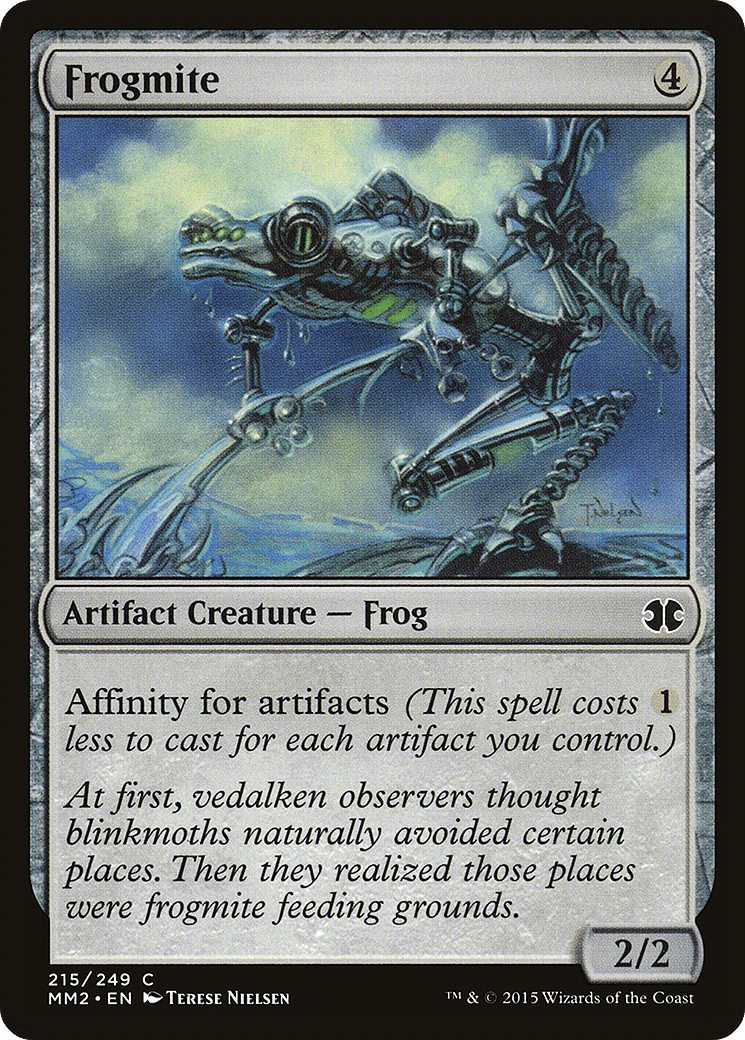
4 Ornithopter

4 Springleaf Drum
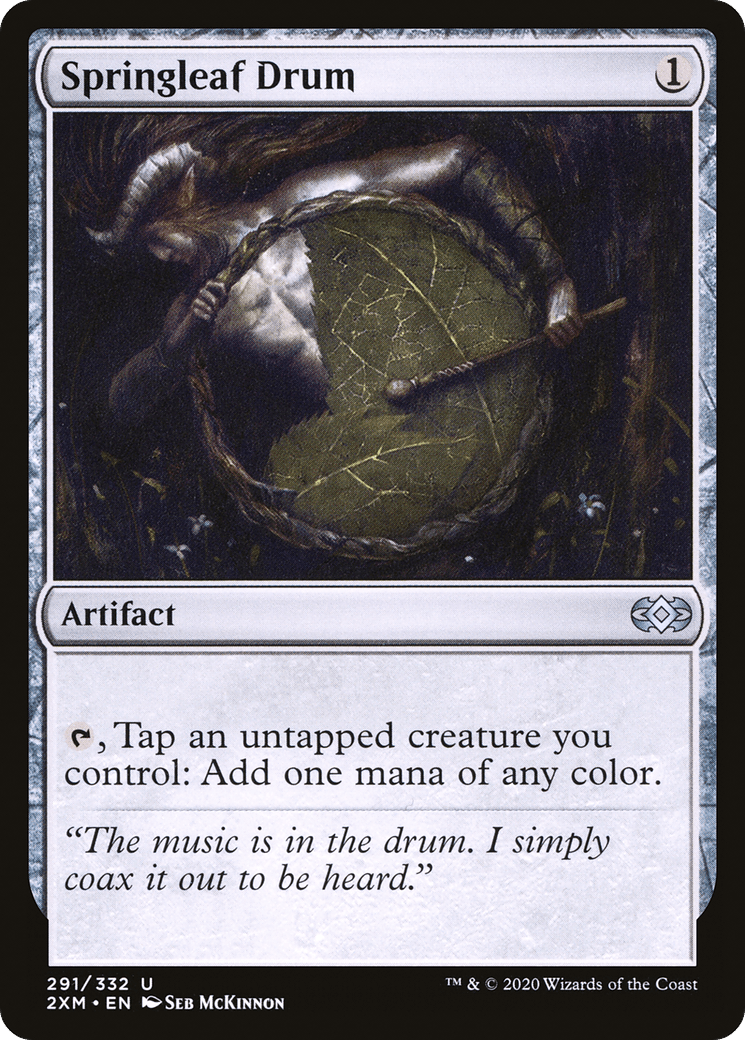
1 Sol Ring

These are your essentials, the things you can’t leave home without. These cards help to kickstart your Affinity count, and provide that base layer of additional mana that the deck thrives on. Because we’re using Artifact counts to create mana essentially, any Artifact that we can get into play for free will pay dividends if it’s allowed to sit out on the board.
4 Thoughtcast
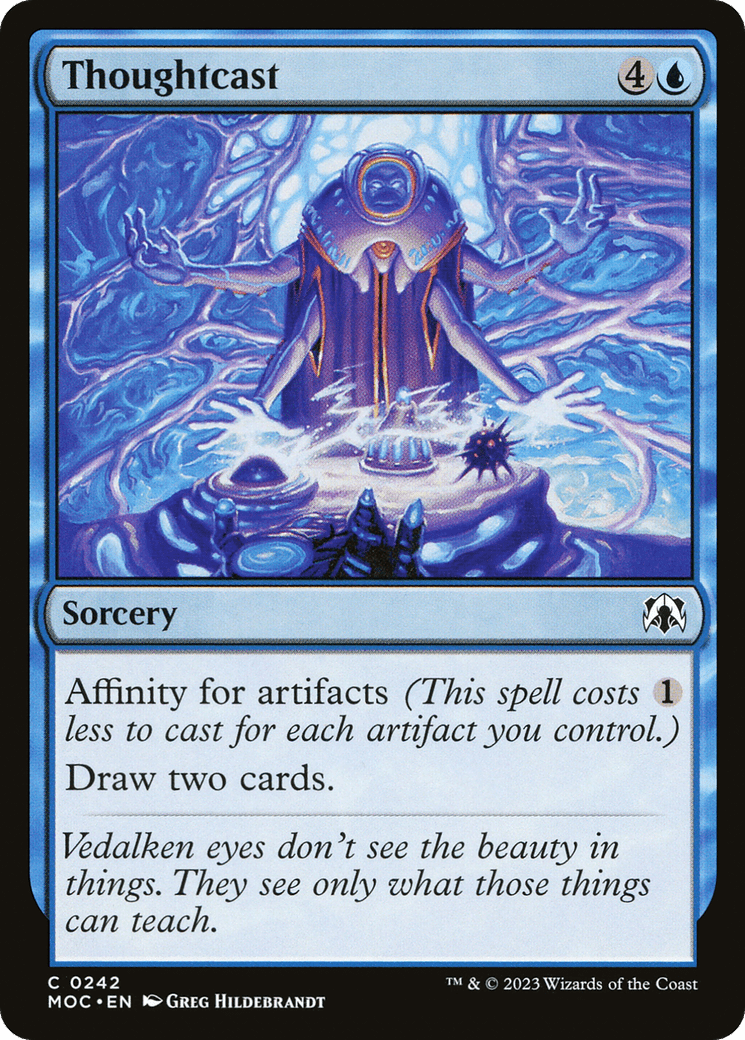
4 Thought Monitor
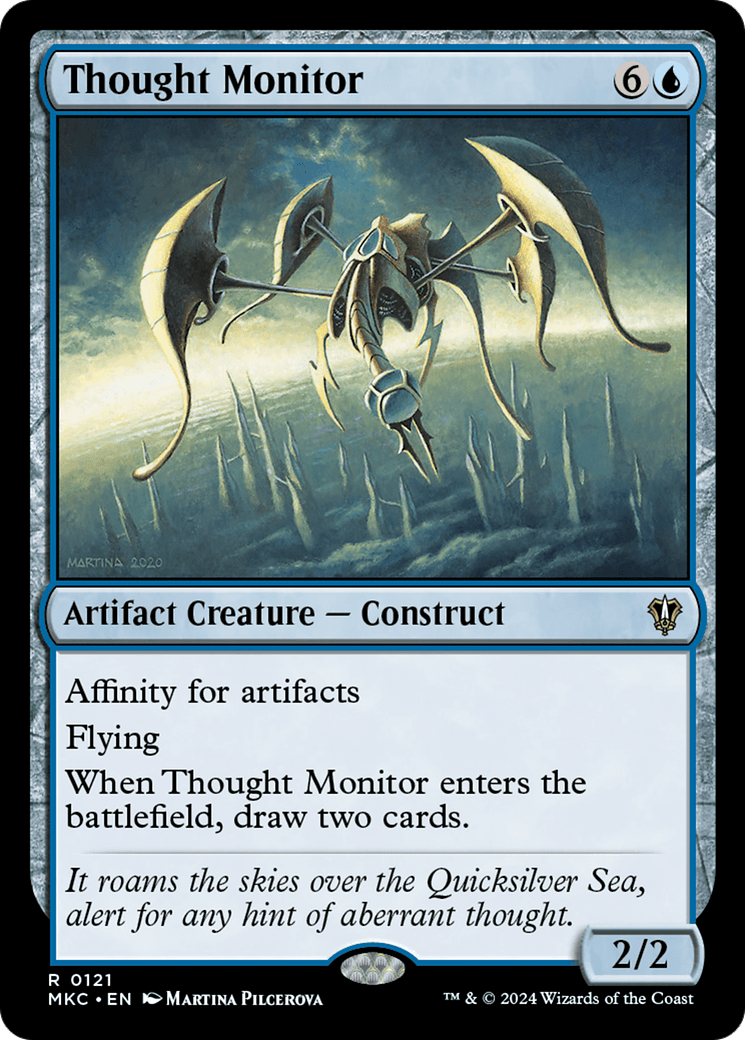
Your must-play suite of draw spells, the 8-Cast package (don’t ask me why it’s not called 8-Thought, i’ll cry) helps you push through any defense that the opponent might be able to set up. These create an insane amount of consistency within the deck, and help turn the tide in any matchup where removal for your dudes is on the table. They can help to dig out of a mulligan situation, though aren’t really strong enough to start a snowball by themselves. They’re best when they’re chained together one after the other, but it can sometimes be difficult to get into the position where you can reliably do that without being ahead already. The main goal of these two is to move you from being at parity with your opponent to being slightly ahead. You do that enough times, and you’ll easily overtake them.
4 Seat of the Synod

4 Darksteel Citadel

0-4 Mistvault Bridge

0-1 Treasure Vault

The Artifact Lands are the other mandatory piece to this deck’s success. Each of them effectively taps for two mana each turn at the minimum, which will swiftly get you moving out of the gate. They’re the core of the mana base, and you want to be packing as many as reasonably possible – most of the time.
Payoffs
4 Cranial Plating

4 Sojourner’s Companion
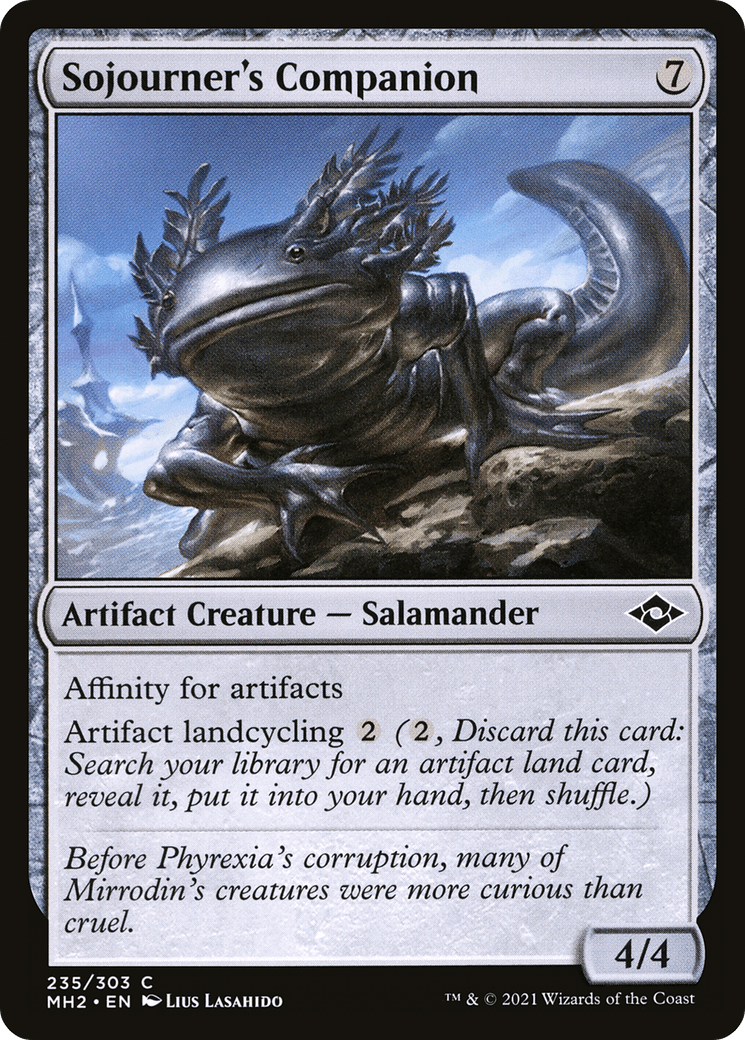
Your primary ways to win, these are the cards that attack for the most damage, the most consistently. Companion helps to push damage through multiple blockers while also providing an excellent blocker itself – which is sometimes needed to create a situation where Cranial Plating can go onto a Flying creature to take over. Plating is the absolute Affinity all-star just as it is in every other format. It turns any of the dinky setup creatures into a 12 power closer that must be answered, and will continue to do so even if the first one does get answered. The instant speed attach effect also makes combat a nightmare if you can enable it, because you can equip it to one creature, attack with three while leaving up BB, and move the Plating to whichever creature is unblocked before damage happens to ensure that the Plating always connects. This isn’t a common play, but it’s certainly one to be aware of both as the Affinity player and as its opponent.
Flex Slots
Outside of the core / essentials of the archetype, there are a good number of cards that regularly see play that vary from player to player. These are typically the cards to cut if you’re trying to work a new card into the deck, though this list will often be more deserving of the space than anything else aside from what’s in the core.
Setting Up
2-4 Moonsnare Prototype
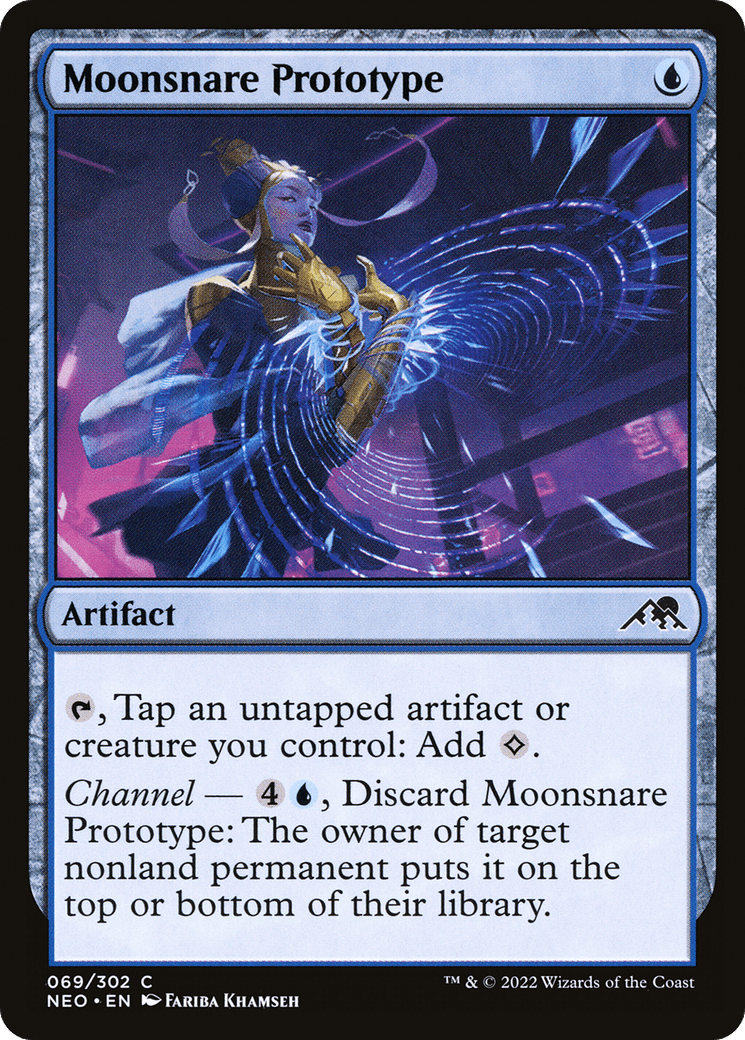
With how incredibly mana hungry the deck can be, running additional copies of Springleaf Drum is frequently very beneficial. The added Channel ability on Moonsnare is some of the only interaction the deck has access to main board as well, which makes this an incredibly solid inclusion. It can happen where you get bogged down with drums in the early turns instead of drawing gas, but that’s the price you pay for consistent explosiveness.
3-4 Forging the Anchor
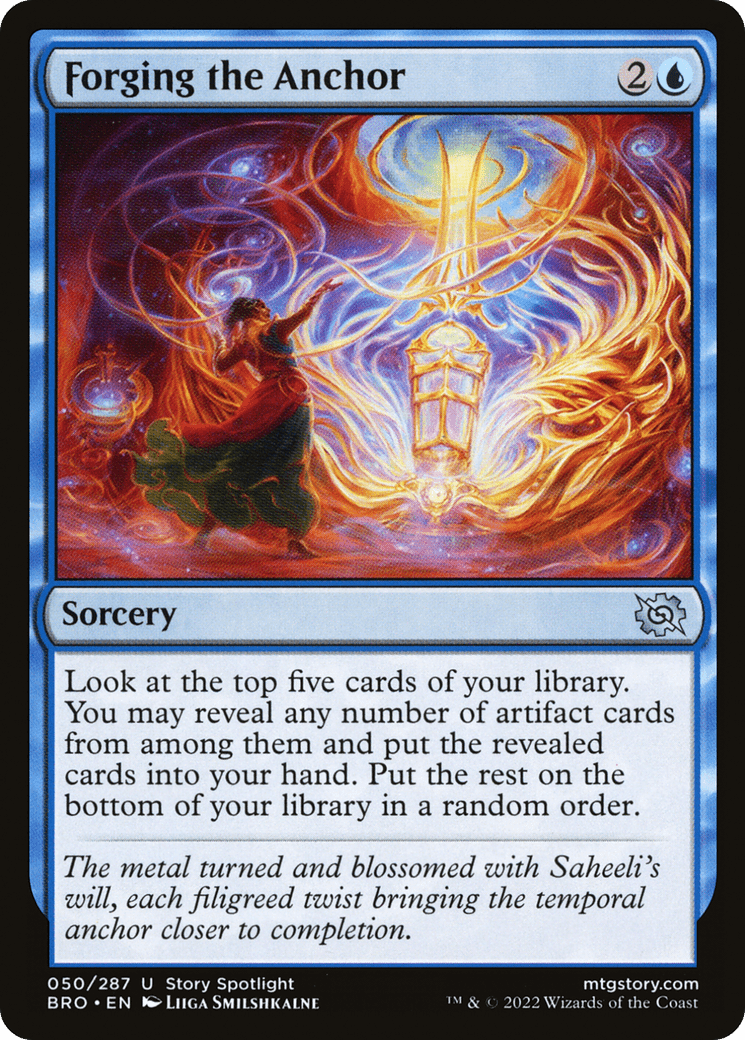
The strongest draw spell available for the deck, this card puts an average of around 3.75 cards into your hand per cast. It’s got the biggest target on its back in terms of counterspells or targeted discard because it’s so impactful, but it will absolutely fill you back up if you can get it to stick. I would recommend playing this one, and even making other concessions to do so (trimming your non-artifact count).
4 Vault Skirge
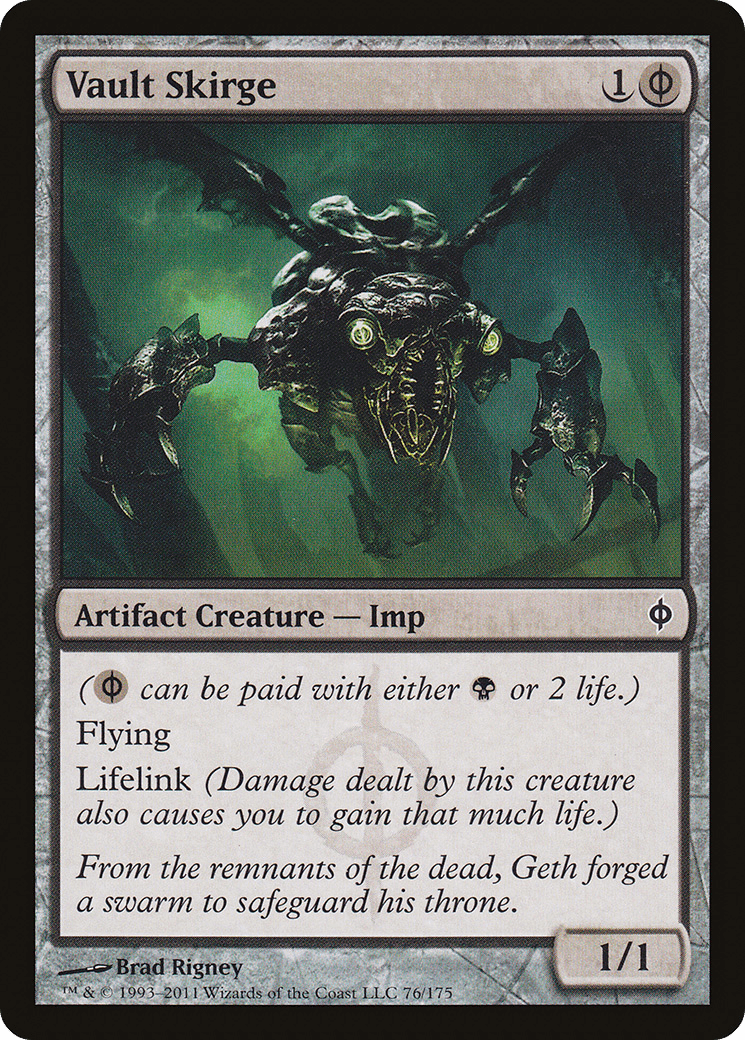
Probably the most innocuous threat in the deck, Vault Skirge is great for tilting the scales in your favor over time. Its Flying ensures that it can attack in unfettered, while the Lifelink will help in racing situations against other aggressive decks. This is probably the best creature to slap a Plating on to, and also one of the best when it comes to mass-pump effects if you choose to include them just because it’s such an effective racer.
Probably the most innocuous threat in the deck, Vault Skirge is great for tilting the scales in your favor over time. Its Flying ensures that it can attack in unfettered, while the Lifelink will help in racing situations against other aggressive decks. This is probably the best creature to slap a Plating on to, and also one of the best when it comes to mass-pump effects if you choose to include them just because it’s such an effective racer.
2-4 Witching Well

4 Chromatic Star

4 Ichor Wellspring

1 Mystic Forge
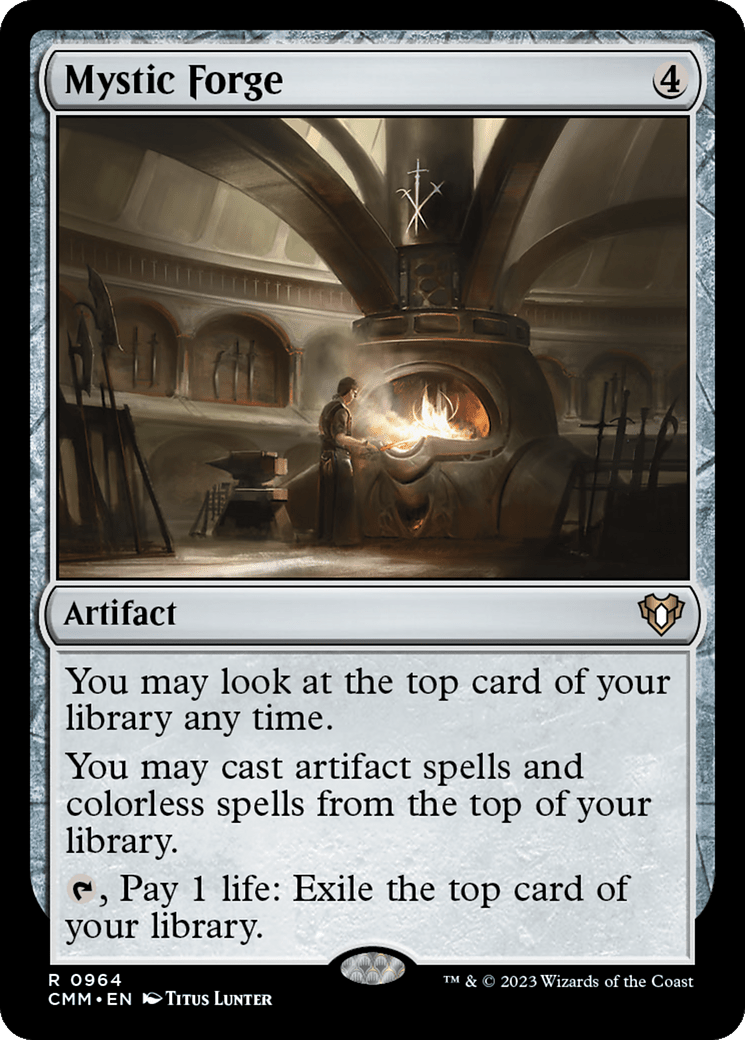
While not stock, these cards have seen play in older Affinity lists, specifically those featuring Atog as a means to sacrifice Artifacts for power. This is occasionally a fine plan, though relatively fragile in the face of interaction. These cards help to increase consistency while developing your board in the earlier turns and are basically on-par with Moonsnare in terms of creating value. It’s just Card Advantage value instead of Mana Advantage.
Payoffs
4 Myr Enforcer
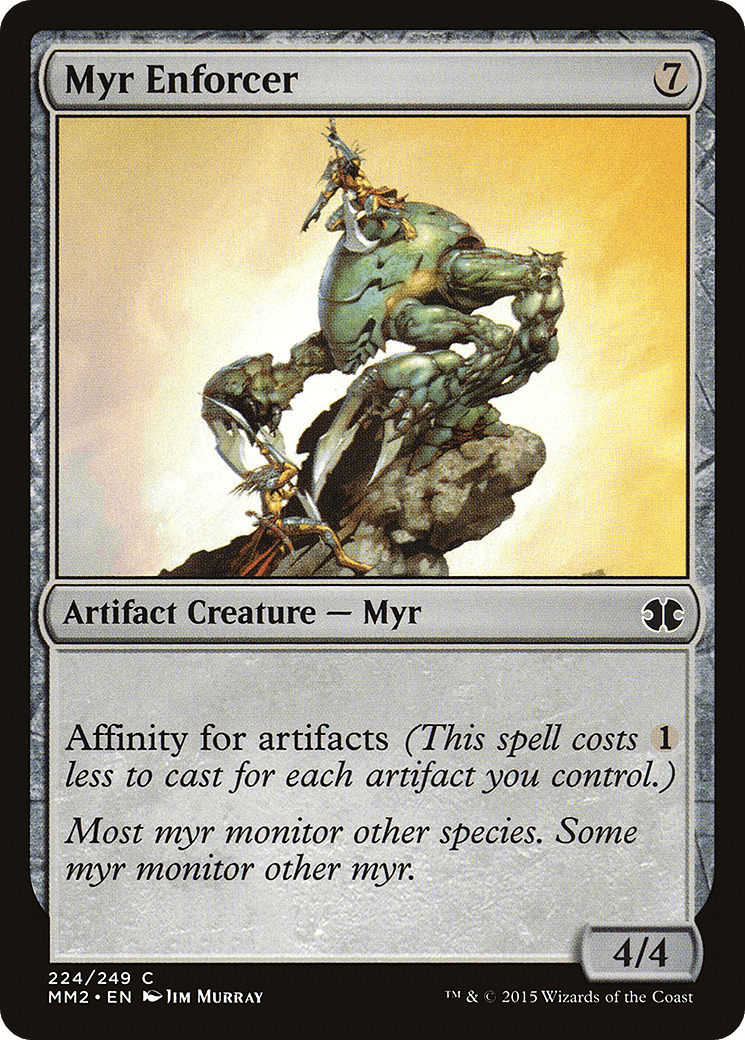
1-2 Kappa Cannoneer

1-2 Nettlecyst

Additional copies of the big fat ground pounders, both of these creatures are well suited to the go-wide plan. Myr Enforcer is functionally the same as Sojourner’s Companion, it’s just difficult to justify playing more than 4 because the card has a tendency to get stuck in your hand while you’re sitting at 5 Affinity and are unable to cast it. Kappa is an excellent – perhaps even premium – threat in the deck because it thrives in the go-wide plan by also allowing you to go tall at the same time. It’s basically another copy of Cranial plating. The only reason that it isn’t seen more often is due to cost, as they’re (at time of writing) around $4 each, which is just too steep for a single inclusion a lot of the time. If you can find the budget space for them though, they can absolutely be worth it. Nettlecyst functions as additional copies of Plating as well, albeit much slower than the original as you can’t move it around as easily. The token can be nice though.
4 Signal Pest
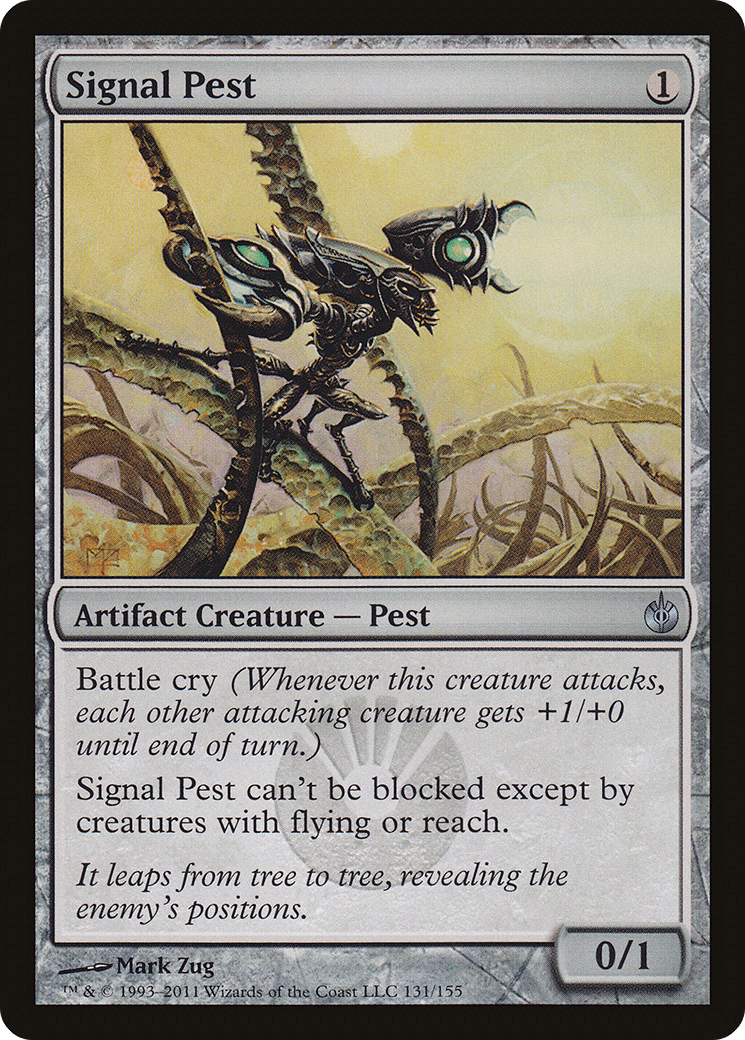
1-3 Chief of the Foundry
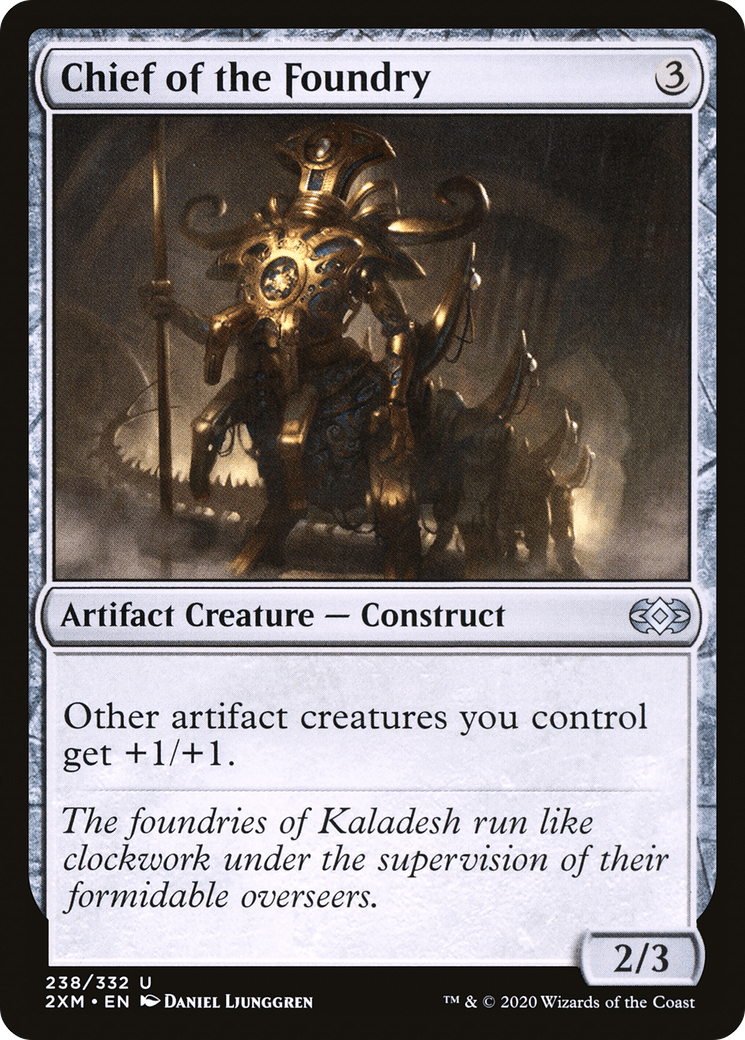
2-4 Steel Overseer
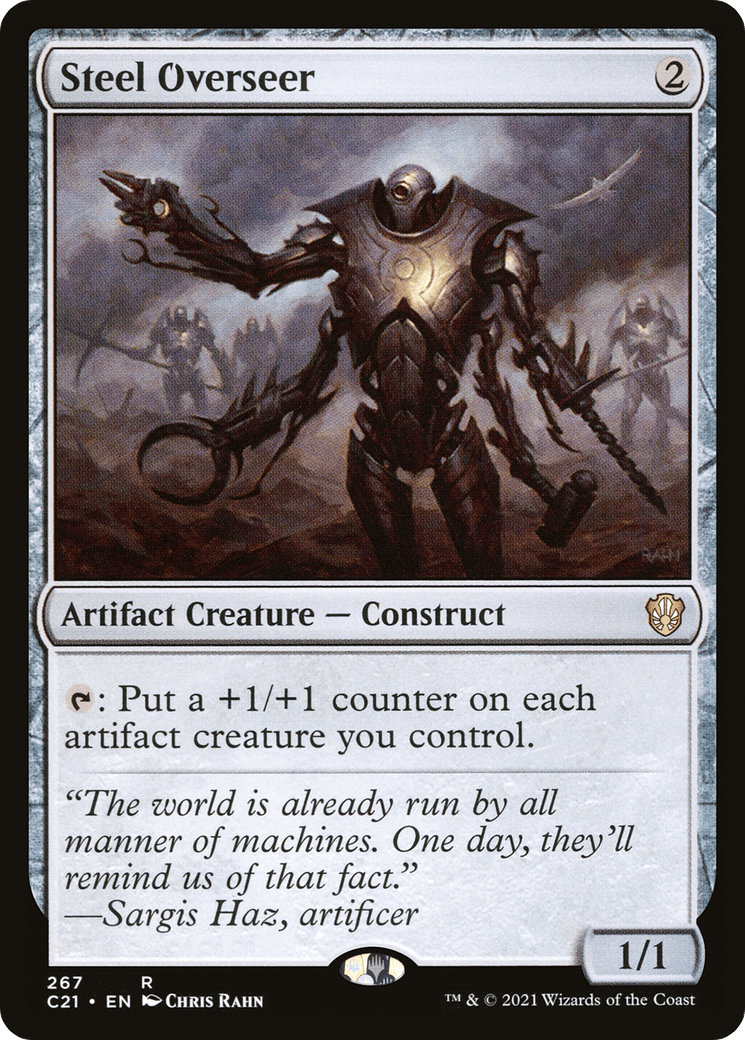
The other payoffs for going wide, each of these has its place in a given meta game. Signal Pest is probably the most played, as its the cheapest of the bunch and thus works best with the Drums, though Steel Overseer creating a permanent and growing buff is premium when damage based removal is popular. Chief of the Foundry is probably the weakest of the group at three mana for just +1/+1, but you’d run them alongside other similar effects in the same way that you’d run Myr Enforcers alongside Sojourner’s.
4 Fling
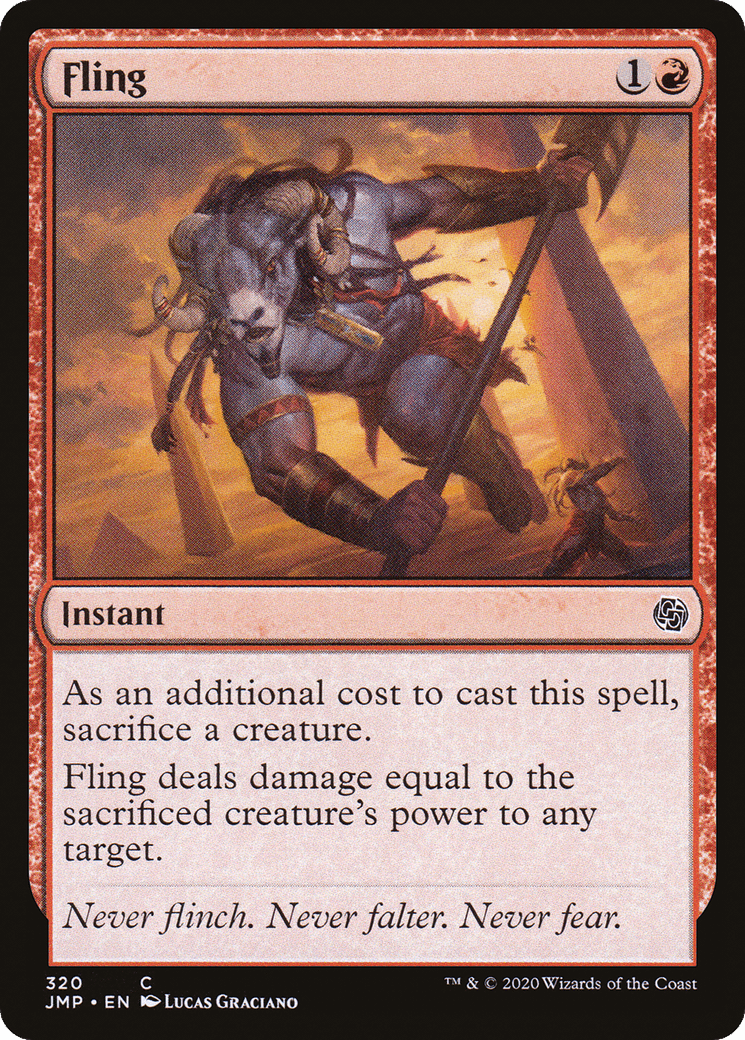
4 Atog
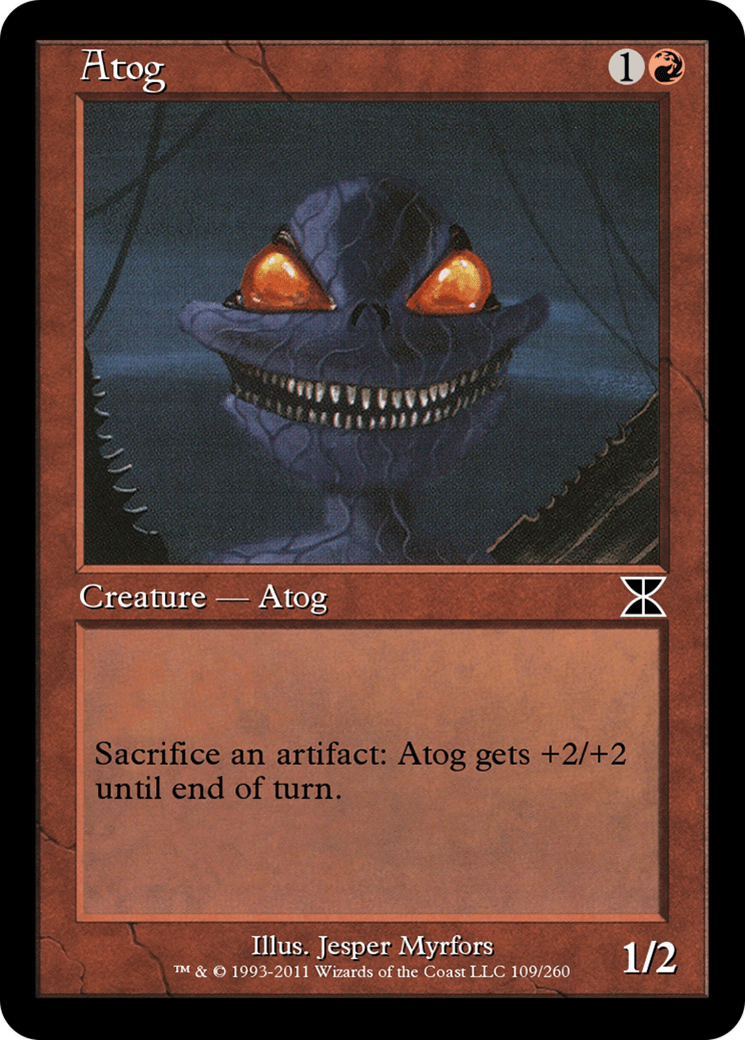
While not recommended because of their tendency to die horribly to removal, some players just really enjoyed playing Pauper from 2013 to 2019 and cannot be swayed away from the Atog’s cheeky grin. In this plan, you will spend your time searching for an opening while you set up as large a board as possible. Then when the opponent goes shields down, you sacrifice everything you’ve got and either attack in or fling the Atog for lethal. You can also fling any other creature with a Plating on it, which makes that card much better than just the Atog itself.
0-6 Basic Lands


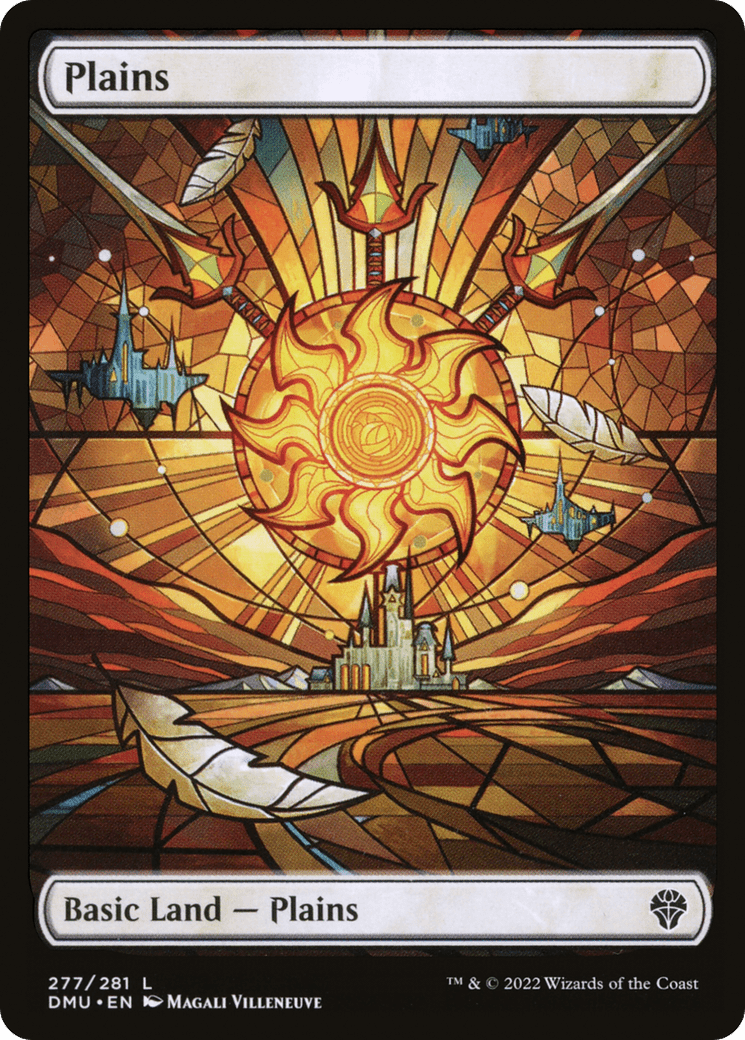
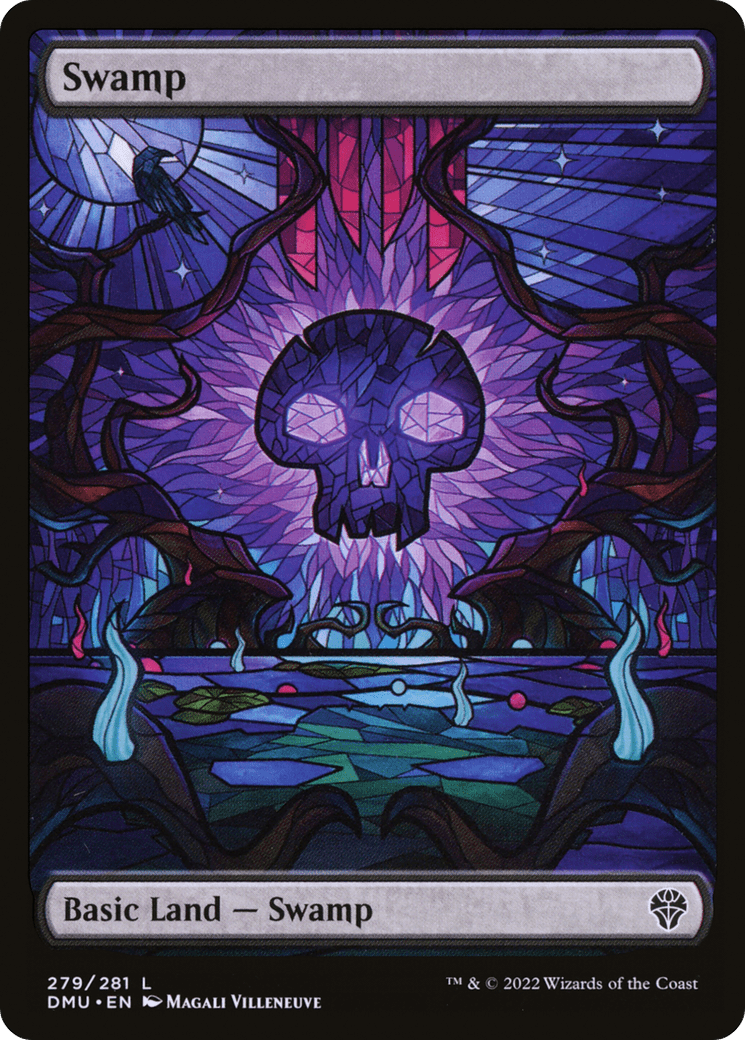
Basics play an important role in Affinity’s mana base, because they allow you to exist in a game that Energy Flux or other similar artifact-wrath cards have resolved. You want to find the right balance between these and your Artifact Lands, because these will only ever add 1 mana per turn, which means that by increasing their count you’re guaranteeing that you’re going to be much less explosive.
Tech Slots
1-2 Etched Champion
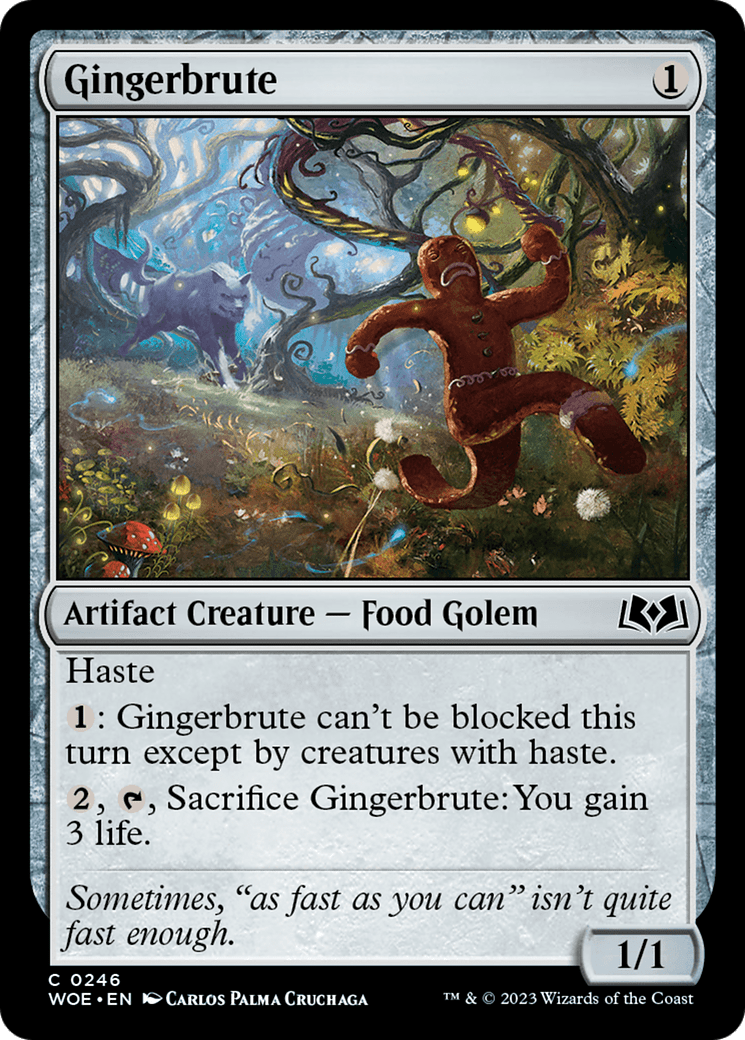
1-4 Gingerbrute
Excellent for pairing with Flying creatures to steal the Initiative in metas where that strategy is prevalent, Gingerbrute is great when you absolutely do not want to be blocked. It also has the added upside of being able to be eaten for 3 life, though that’s much less relevant than being an unblockable haste threat.
1-2 Etched Champion
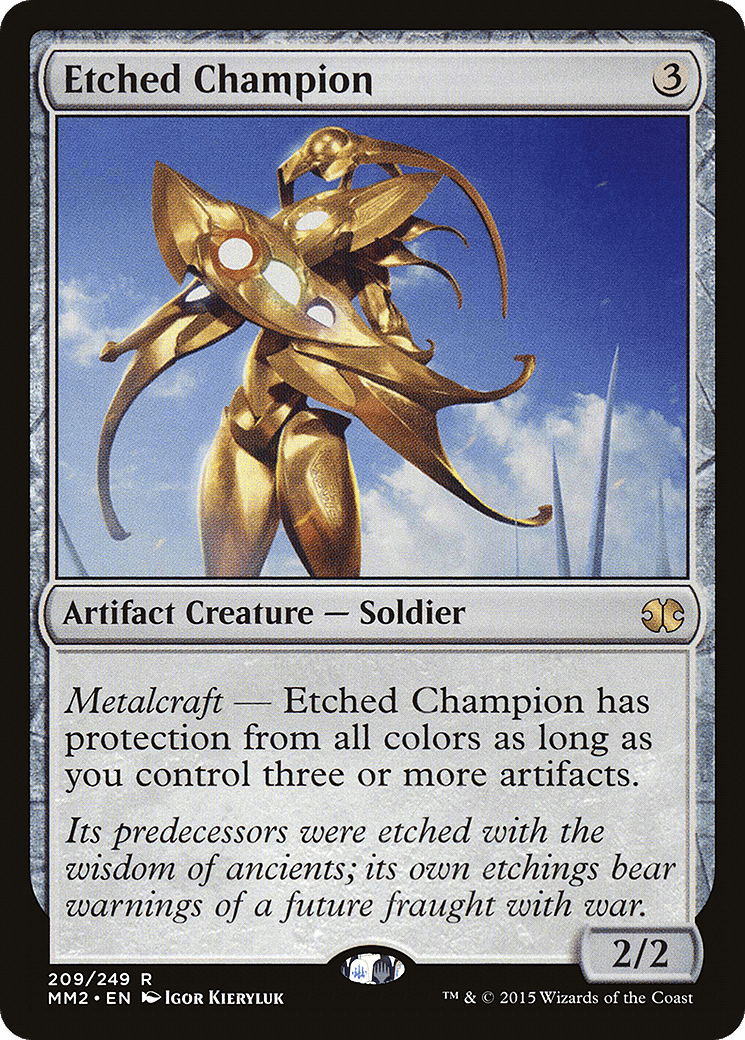
Similar to Gingerbrute, Etched Champion sees play when spot removal is at its highest. If everyone is playing Mono Black or Burn, that’s where Etched Champion shines. With Protection from Colors, it’s very easy to steal the Initiative, beat down with a Cranial Plating, or just stonewall block something for eternity.
1-2 Emry, Lurker of the Loch

While not a stellar card on its own, Emry does enable some cheeky counterplay to attrition based decks that want to play a low resource game. Pair this with Mishra’s Bauble if you do want to include it, as the draw engine created there is difficult to get ahead of on top of everything else this deck is up to.
4 Mishra’s Bauble
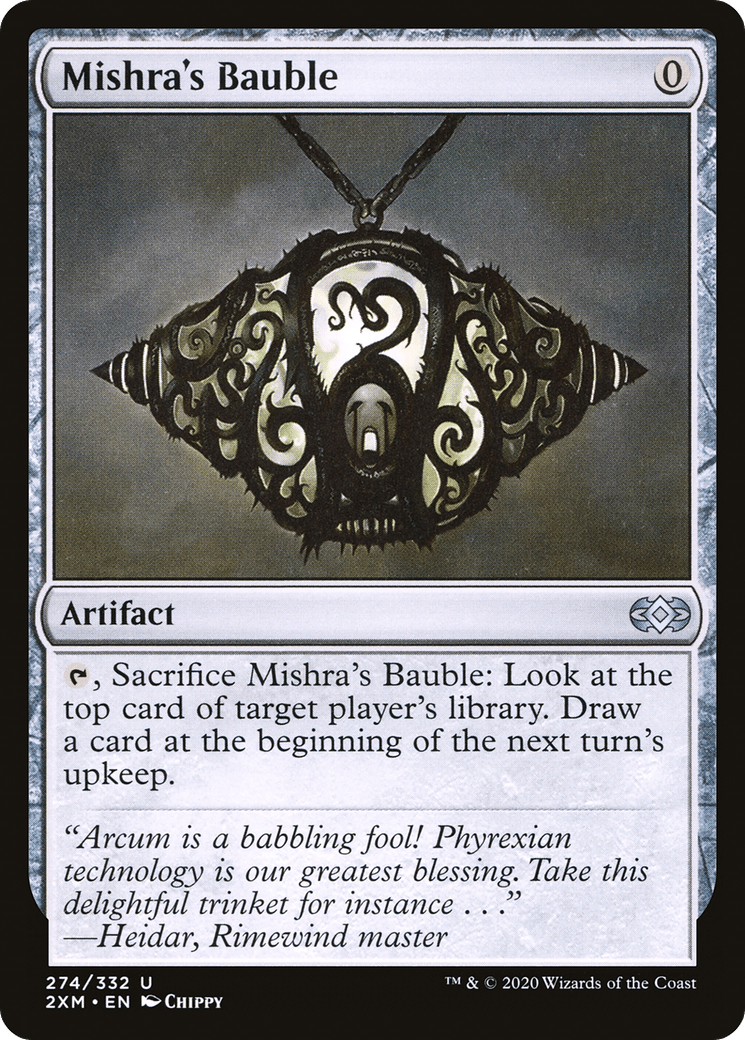
I’d only play this card when Emry or Lurrus of the Dream-Den are involved. While it seems ideal for the deck on the whole, one artifact that draws a card that you can’t even use this turn is not a strong card here. We don’t care about the information gained from it, and without a way to repeatedly cast it there’s no advantage to be gained from an Artifact whose only job is to get sacrificed.
1-3 Sai, Master Thopterist
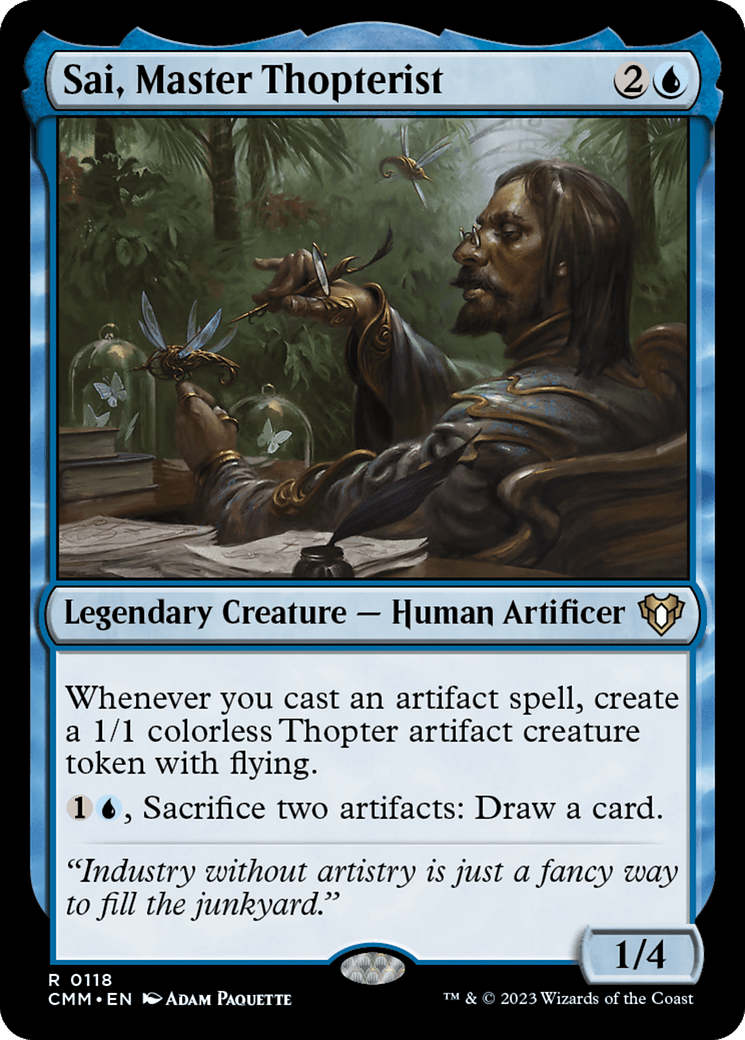
Another attrition based card, Sai is good for situations where you think the ground is going to get easily clogged or the Initiative is going to be taken back and forth starting from the early turns. He makes Flying tokens, which we’ve already seen to be excellent in this sort of deck in a lot of situations.
1 Tinker
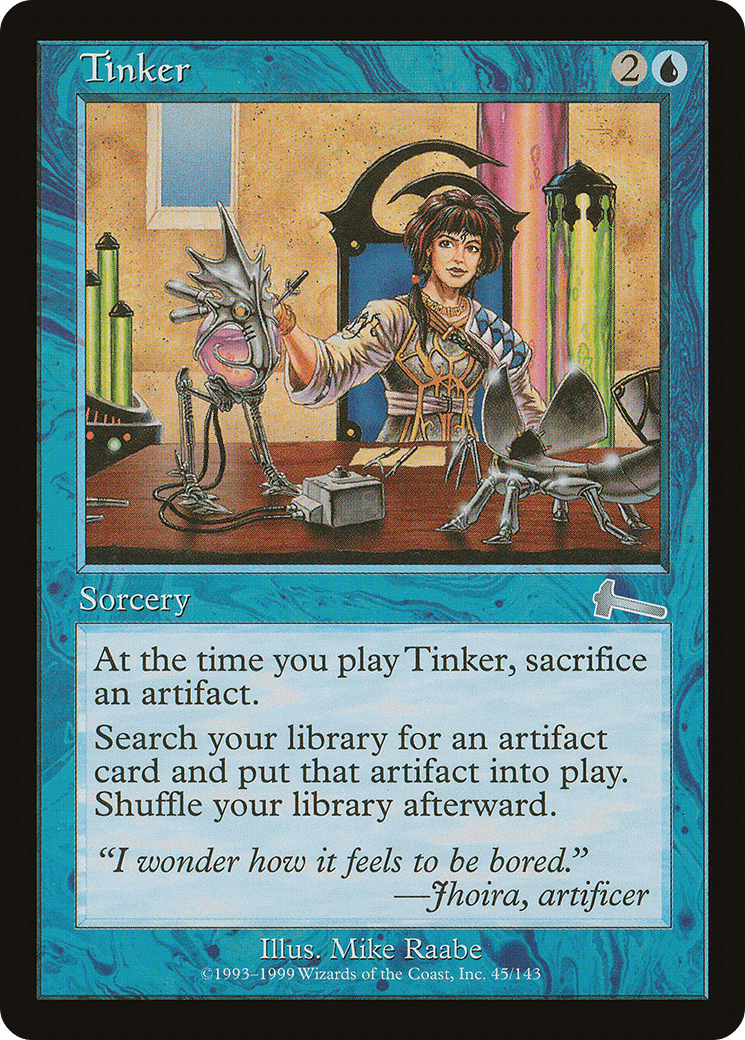
4 Neoform
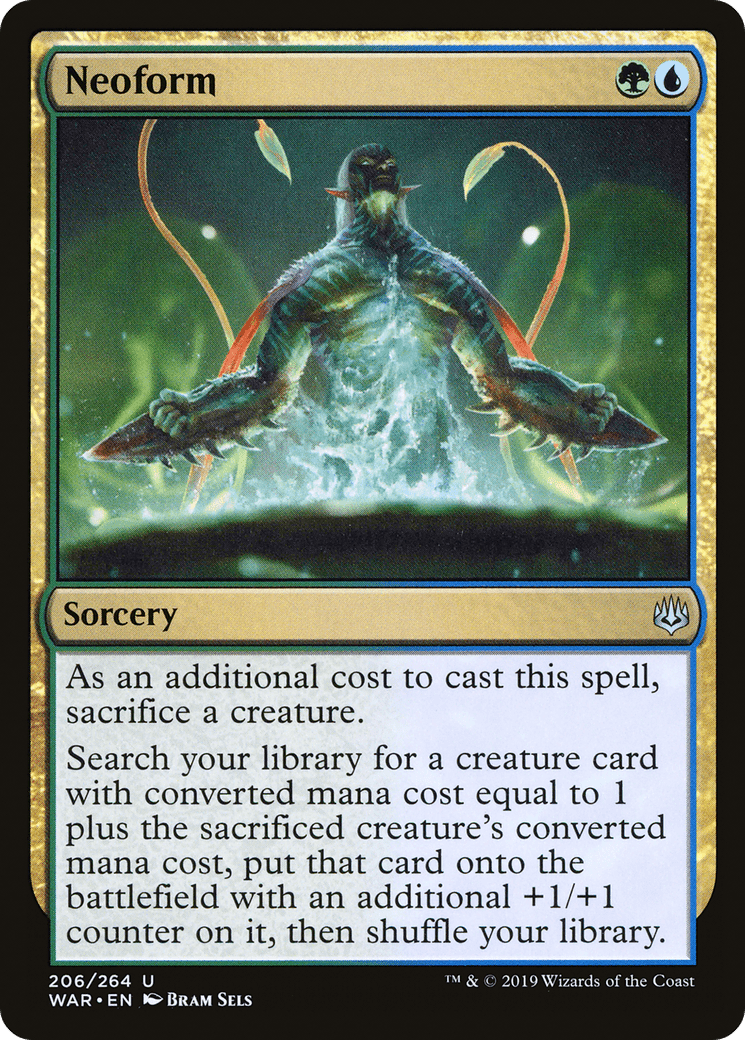
Often used as a juke to get around the classic hate for small creature decks, this package takes advantage of cards like Sojourner’s Companion in order to cheat out a huge creature that can singlehandedly take over the game, like a Griselbrand, Stormtide Leviathan, or Inkwell Leviathan. While I don’t think that Tinker is necessarily incorrect to include (as it can also find things like Mystic Forge, Cannoneer etc), I do think that Neoform is incorrect to include in the deck because it’s extremely win-more.
Sideboard Composition
Your biggest concern while sideboarding is a card that will shut your entire deck down on its own. Energy Flux is the biggest offender, but cards like Kataki War’s Wage, Fade from History, Collector Ouphe, Stony Silence, and the recently banned-in-Pioneer Karn, the Great Creator will also completely hose you because these cards shut down your lands as well as your creatures. So the sideboard configurations are going to be geared towards beating that style of card first and foremost, and beating anything else second.
Most Common
2-4 Damping Sphere

High Tide is an abysmal matchup, as are most other Storm based decks. You need to be able to stop them with one card, because you really don’t have the tools to beat them otherwise. They’re faster than you are most of the time, so racing them isn’t an option like it otherwise would be against a Turn 4 deck.
2-4 Machine over Matter
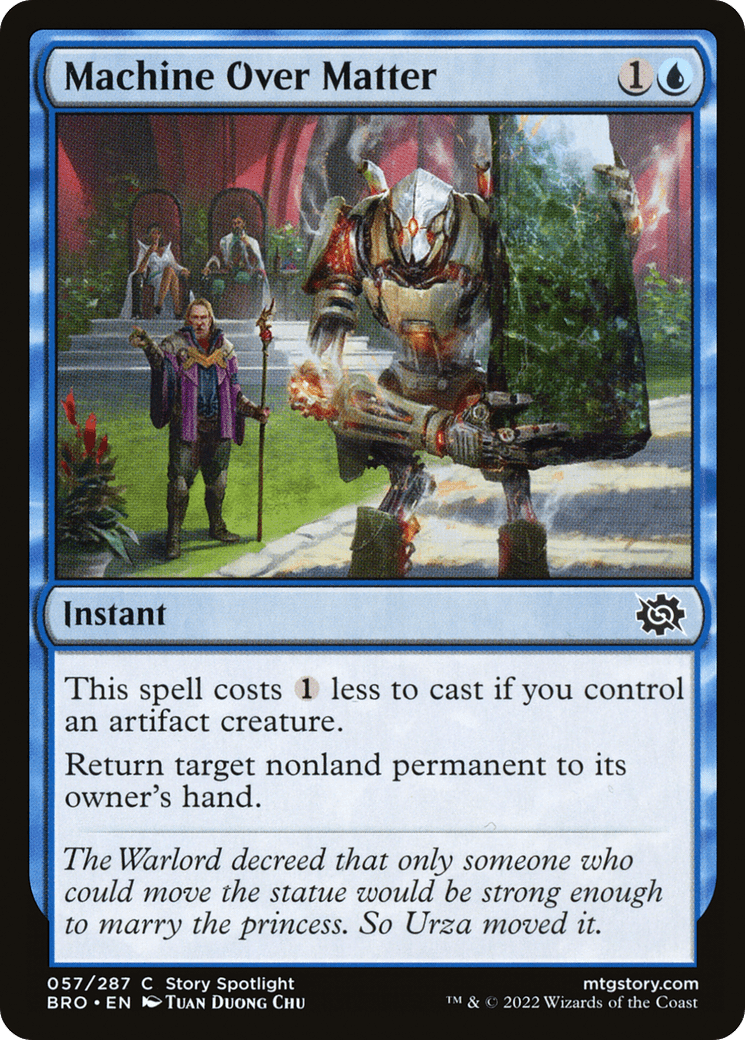
Likely the best bounce spell we have access to as it hits non-creatures, Machine over Matter will basically always cost just a Blue to cast. While it can buy a turn against an Energy Flux, it’s not the correct answer to the card if you’re expecting a lot of blue decks at an event. This is best used to disrupt a game winning combo, or clear out a blocker in order to push through lethal – this is very seldom a defensive card.
2-4 Metallic Rebuke
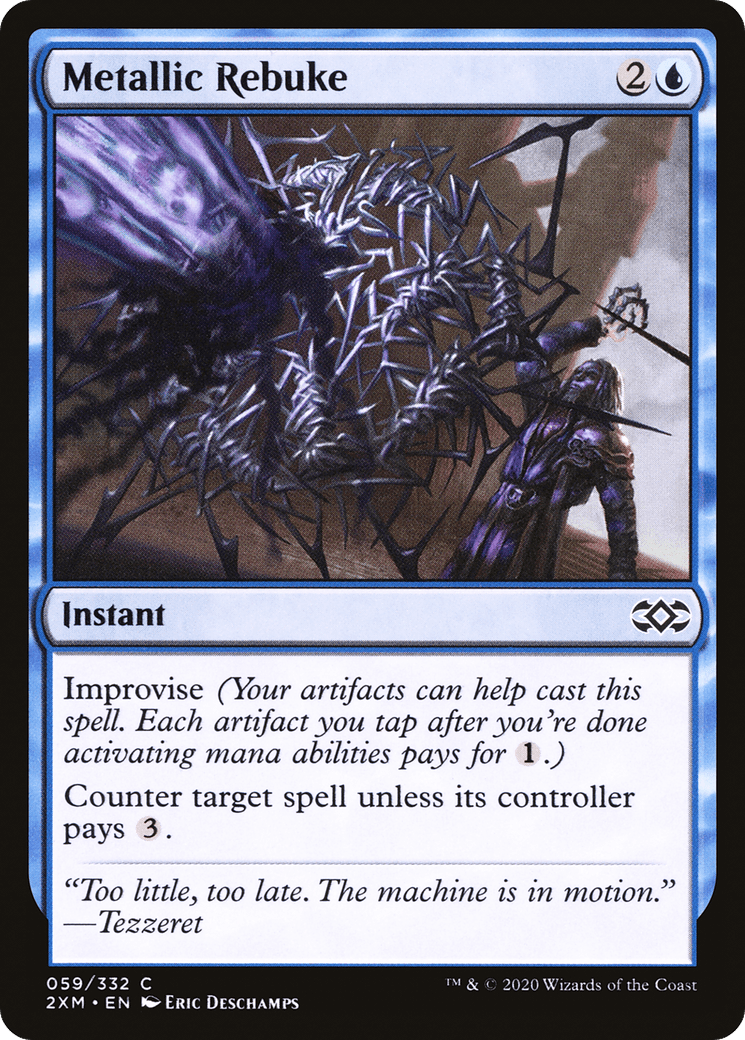
The opposite of Machine over Matter, Metallic Rebuke is a strictly defensive card that is our primary answer to both any incoming removal / one of those hoser pieces, or anything that the opponent might be trying to resolve in order to close out a game. I like to use this as anti-removal most often, but there’s use for it in almost every matchup.
2-4 Graveyard Hate


Which of these you play is up to you, there isn’t really a benefit to any one card over another. Very rarely you’ll see a meta where you need to be casting these, as typically against graveyard decks like Dredge you’re just racing them in the air. These will more often come in against decks that incidentally use the graveyard, but it’s not their primary source of advantage like Flash and Rakdos Lurrus.
Somewhat Common
1-4 Banish to Another Universe
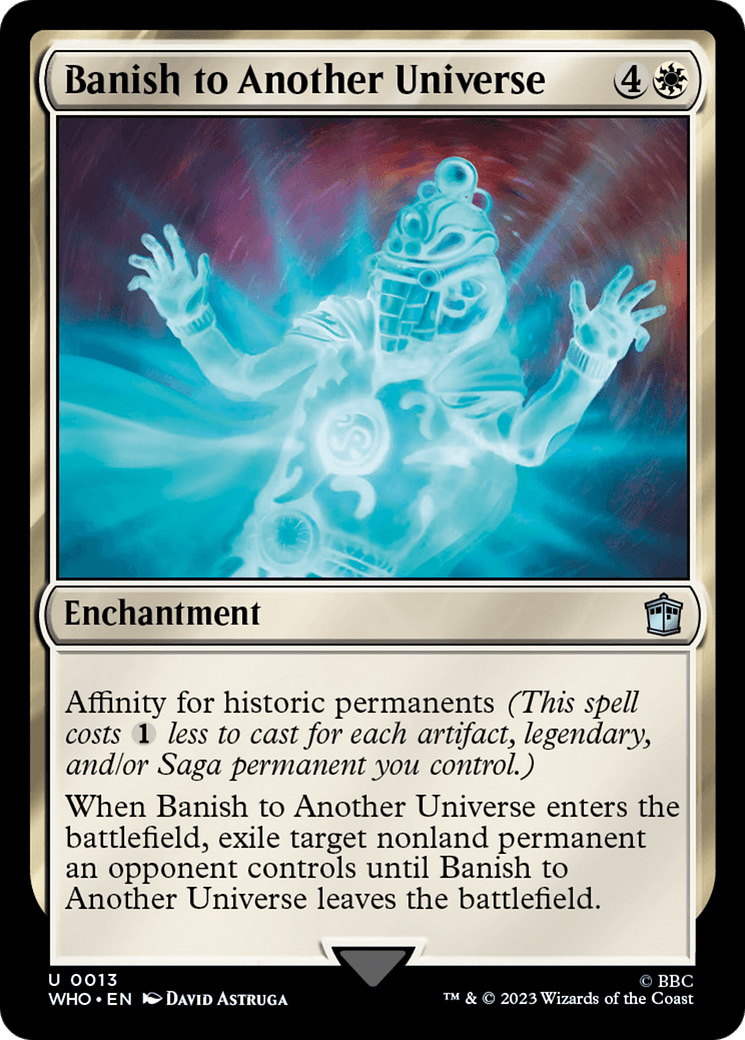
Difficult to cast, but very strong against a few different matchups, this catchall answer to problematic permanents can be the difference between winning and losing. I’d consider this a side-grade to Machine over Matter because they essentially do the same thing.
2-3 Spell Pierce

There’s a good number of decks out there that can’t beat a strong clock backed up by miniscule amounts of disruption, and that’s what Spell Pierce is primarily for. High Tide, Energy Flux, and Fade from History are the cards most frequently tapped out for against you, and Spell Pierce easily dispatches all of them.
Jegantha the Wellspring or another Companion
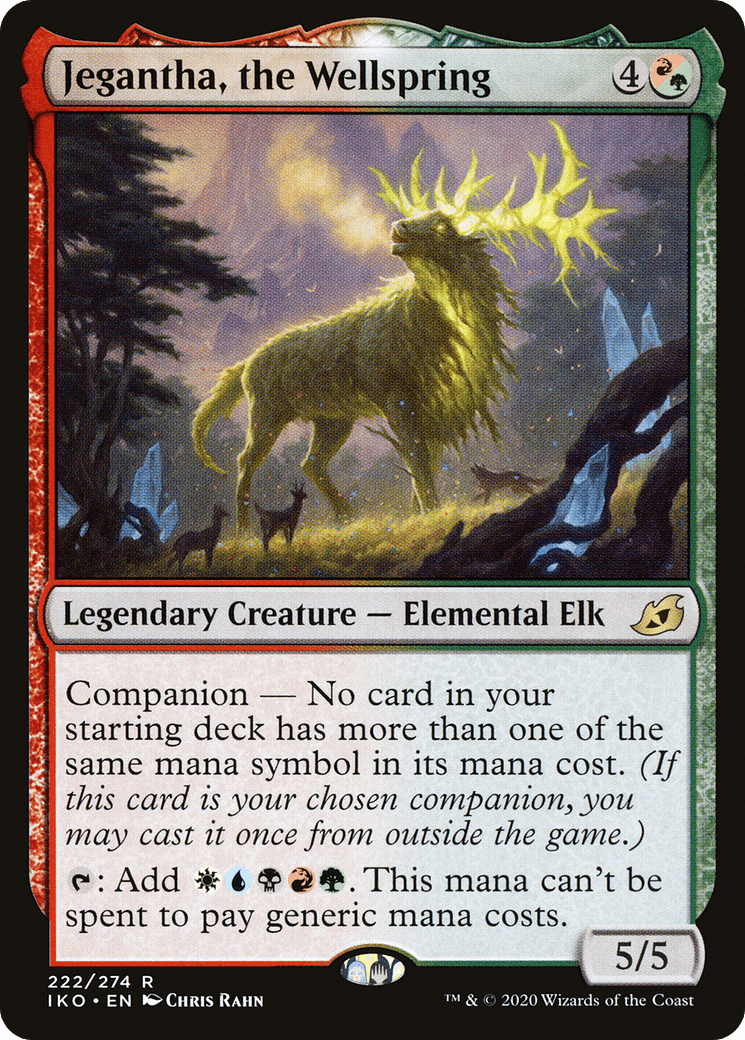
Companions are a point of contention in the Value Vintage community because their usefulness is hit or miss dependant on the matchup. I personally do not find value in adding them, as the sideboard slot that they take up is often just a better card in more matchups, but those that do play them consider them to be a main deck card that you use in case of emergencies. Admittedly, there are often situations where your creatures will get wrathed, and neither player is left doing anything. That’s the perfect situation for a Companion to come in and present a clock. I think that it’s largely just up to your local meta game and personal player preference whether or not you include them.
Rarely Used
1-2 Karn, Living Legacy

Despite it’s popularity in my list, Karn is actually not a card that i’d recommend people rely on consistently. It’s mostly there as a non-creature, non-artifact threat in the face of board wipes as it eventually allows you to turn your lands into pingers. However there is also some practicality against the likes of Energy Flux specifically, because it adds an extra mana that could go toward a land should Karn come down before the Flux does. This basically creates a Lotus Petal each turn that you can put into a Land to make sure that you have mana later down the line, as Karn is ticking up. Then eventually you can Ultimate, and each of your top decks becomes semi-live again. It’s not the best plan in the world, but the card’s got its uses.
Negate, Dispel, other Counterspells
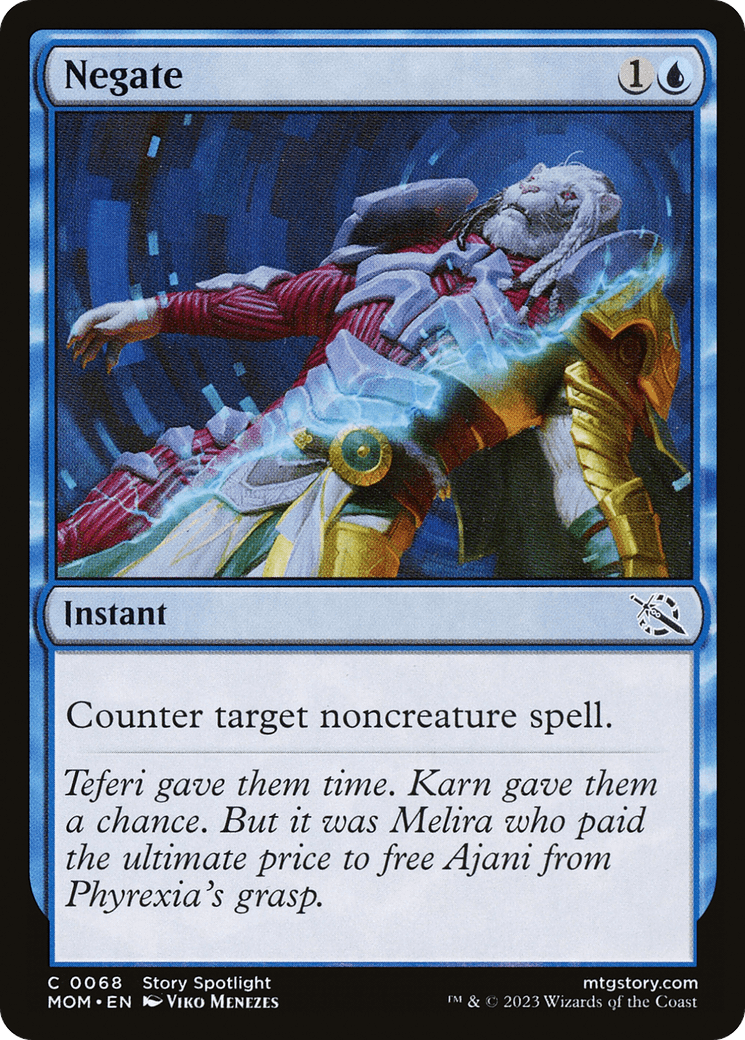

I would recommend that other counterspells that aren’t Metallic Rebuke and Spell Pierce stay out of the sideboard because they’re not mana efficient enough. You’re an aggro deck first, a tempo strategy second (post sideboard). Just killing the opponent is often a better play than holding back counter magic. If the only deck you expect to play against is Storm however, yeah go ahead and pack some additional counters.
Example Decklists
– Pogobat
– Servotoken
Matchup Analysis and Sideboard Guide
A brief overview of what you might expect out of each matchup, considerations for sideboarding, and a rough outline of your mentality going into the match if you’re looking to perform optimally. All sideboards are going to be different, but assuming that you’ve built based on the information available in this guide, there are certain types of cards that will be coming in and going out that you should be able to deduce relative to your specific sideboard configuration. It is up to you as a pilot to create your own specific sideboard guide with exact ins and outs. For this guide, I will be referencing my own build, though there will be a lot of crossover regardless of what your composition looks like.
Favor Scale:
Very Favored > Favored > Slightly Favored > Even
Even > Slightly Unfavored > Unfavored > Very Unfavored
Initiative
Matchup Feel:
Favored
Sideboard Philosophy:
- Anti-Spot Removal, or Bounce Spells
- Sojourner’s Companion, Trim Extra Drums
General Game Plan:
This is a fairly straightforward matchup as you battle over taking the Initiative. Against green versions, you should be able to fly over their army and have Initiative fairly consistently via Ornithopter, Signal Pest, Vault Skirge etc. Against black versions, play a little slower until you’re able to overwhelm their in-hand resources, and focus on resolving a Plating and sticking it to anything that’s still alive.

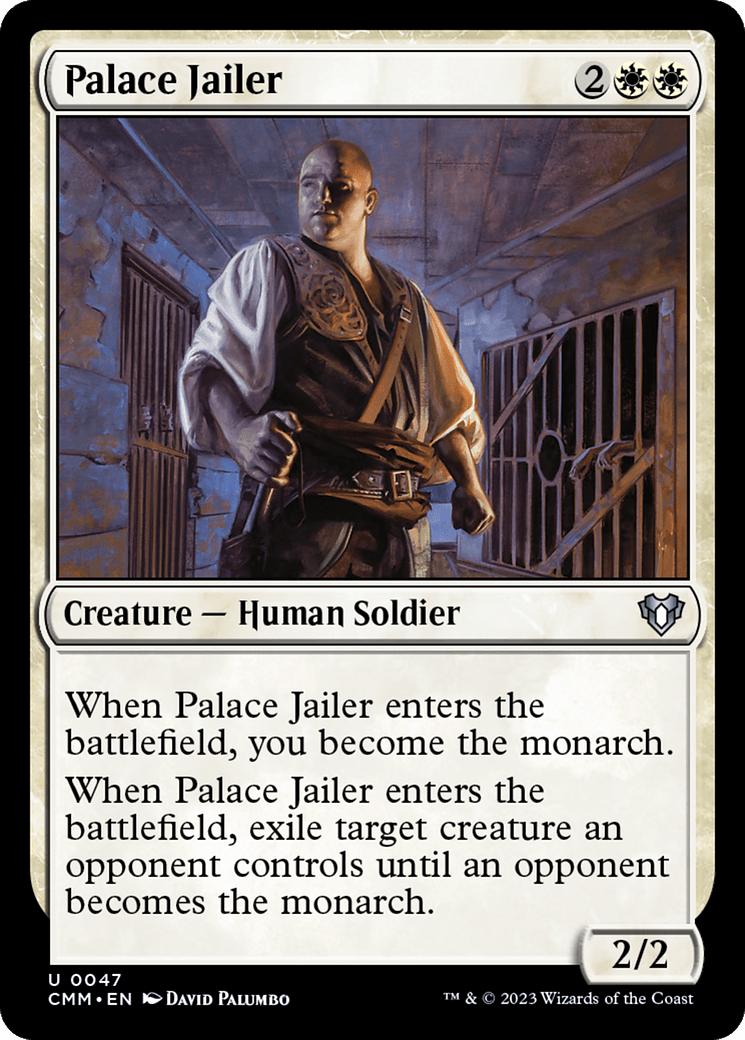
High Tide / Storm Combos
Matchup Feel:
Unfavored preboard, Slightly Unfavored postboard
Sideboard Philosophy:
- Damping Sphere, Grave hate if it matters, Counterspells
- Trim Frogmite, Trim Sojourner’s, Trim Forging
General Game Plan:
These will generally be a race where not a whole lot else matters. Keeping a fast hand in the post-board games is more important than keeping a hand with interaction in it, though obviously you’d prefer to have both. You really only get one chance with counter magic, so make sure that you already have a clock established and that it’ll resolve when you go to cast it. Targeting the High Tide is usually the correct option since most playable counter magic is just a mana tax. They’ll probably have answers for a Damping Sphere, so use all the time you have with it in play to get in as much damage as possible. The matchup isn’t unwinnable, but it is very difficult.
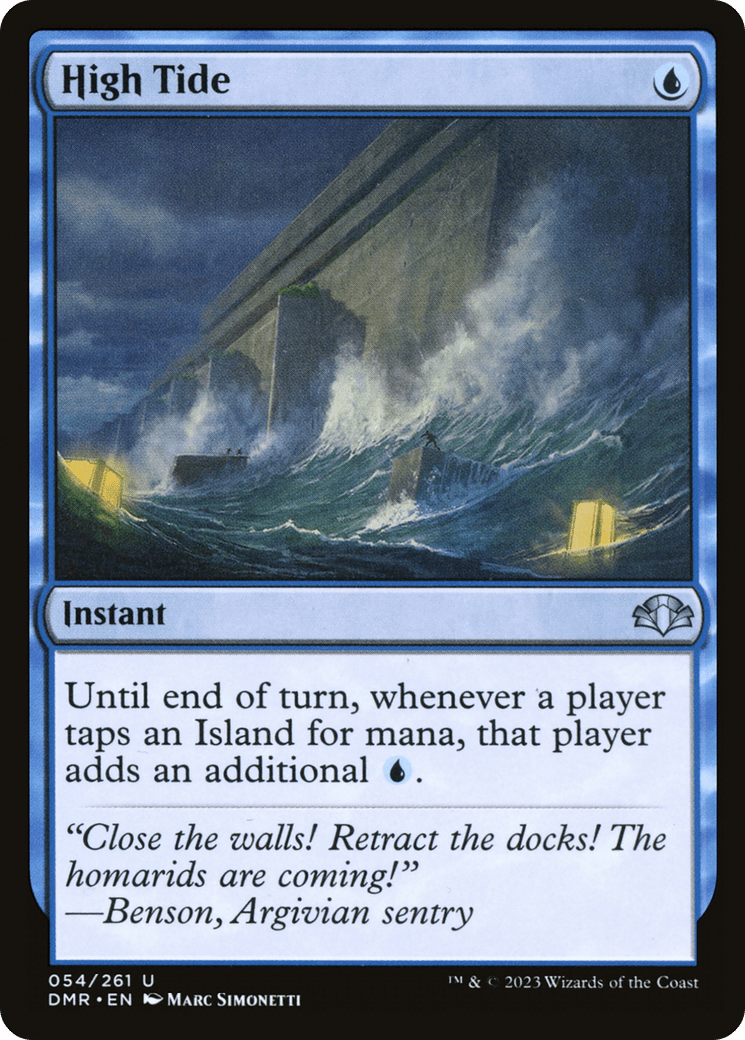
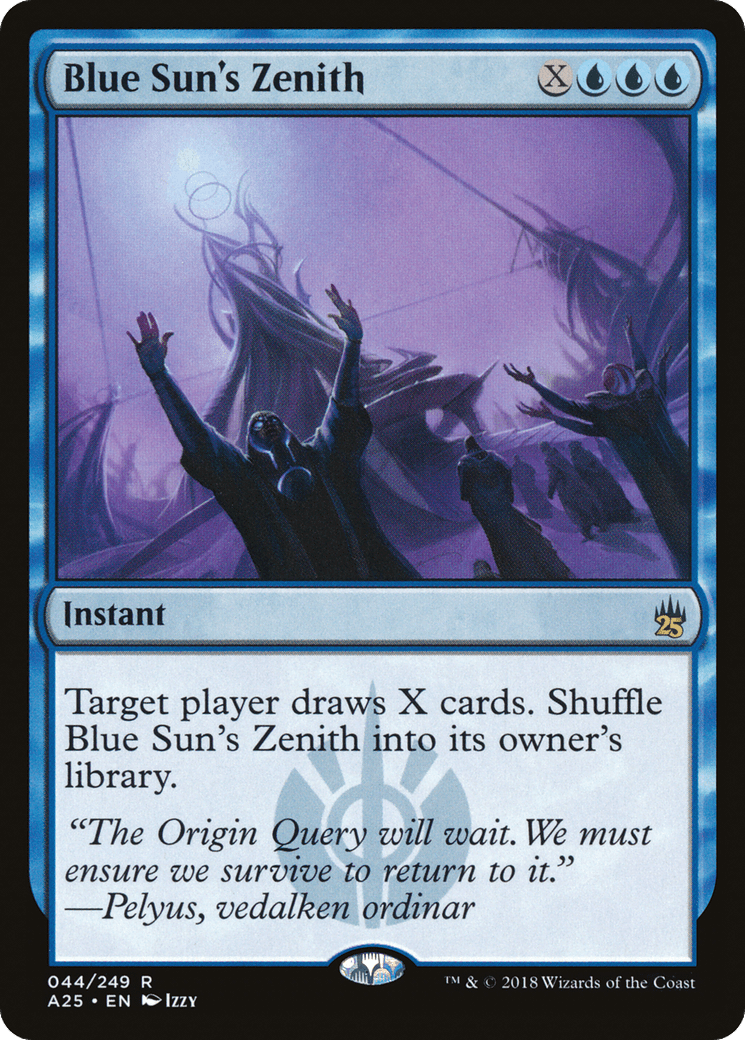
Burn
Matchup Feel:
Even
Sideboard Philosophy:
- Machine over Matter, Spell Pierce
- Forging, Extra Drums
General Game Plan:
Largely just a race, you’re relying on creatures with more than 1 toughness especially. They want to resolve creatures and use them as repetitive damage sources, so if you can trade when they attack, it’s usually worth considering. You’ll win every game where they have a dense creature draw, and lose most games where they’re slinging burn spells. If you can manage it, Vault Skirge can easily turn the tide in your favor, but they’re going to be just as aware of this as you are.
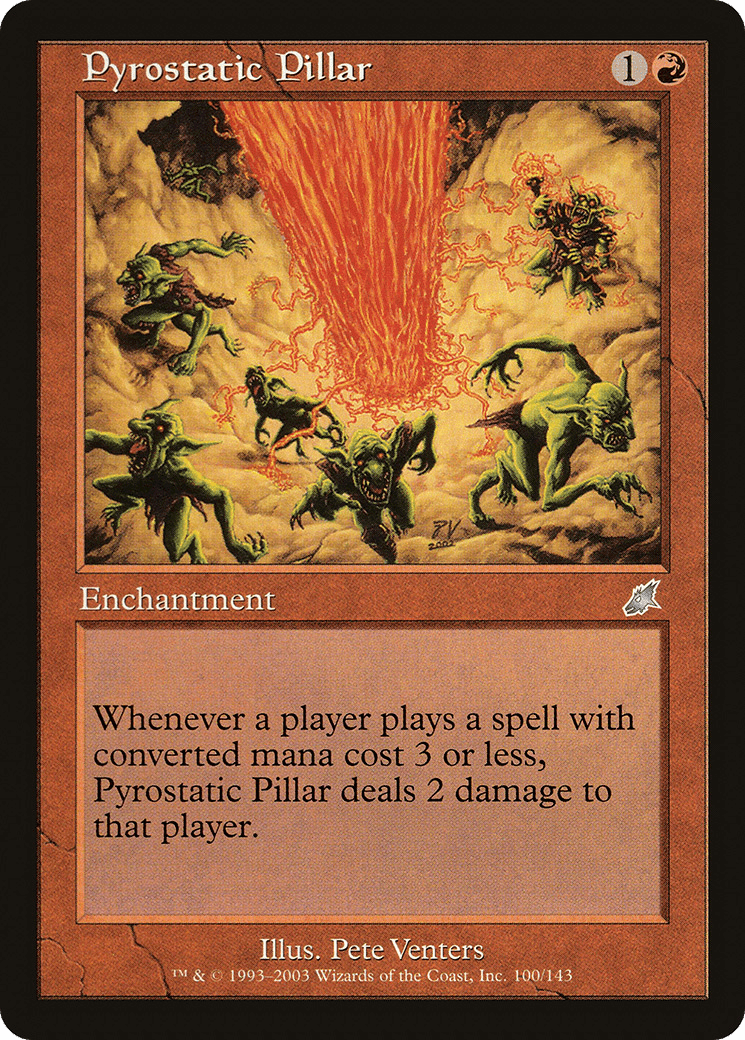

Black Aggro
Matchup Feel:
Slightly Favored on the Play, Slightly Unfavored on the Draw
Sideboard Philosophy:
- Bounce Spells, anti-spot removal cards
- Signal Pest, Trim Forging
General Game Plan:
Game one they’re going to be focused on the discard plan, which means that your hand vomit plan is going to prevail. Jamming out an early Sojourner’s is especially potent as it will stonewall most of their dudes for a couple of turns. You have enough draw power to fight through all of their discard, and your creatures get big faster than theirs do. Post board, they have access to stronger removal and board wipes, so it’s a bit more of an uphill climb. In either case, flying creatures equipped with Plating will almost always be enough to get there.
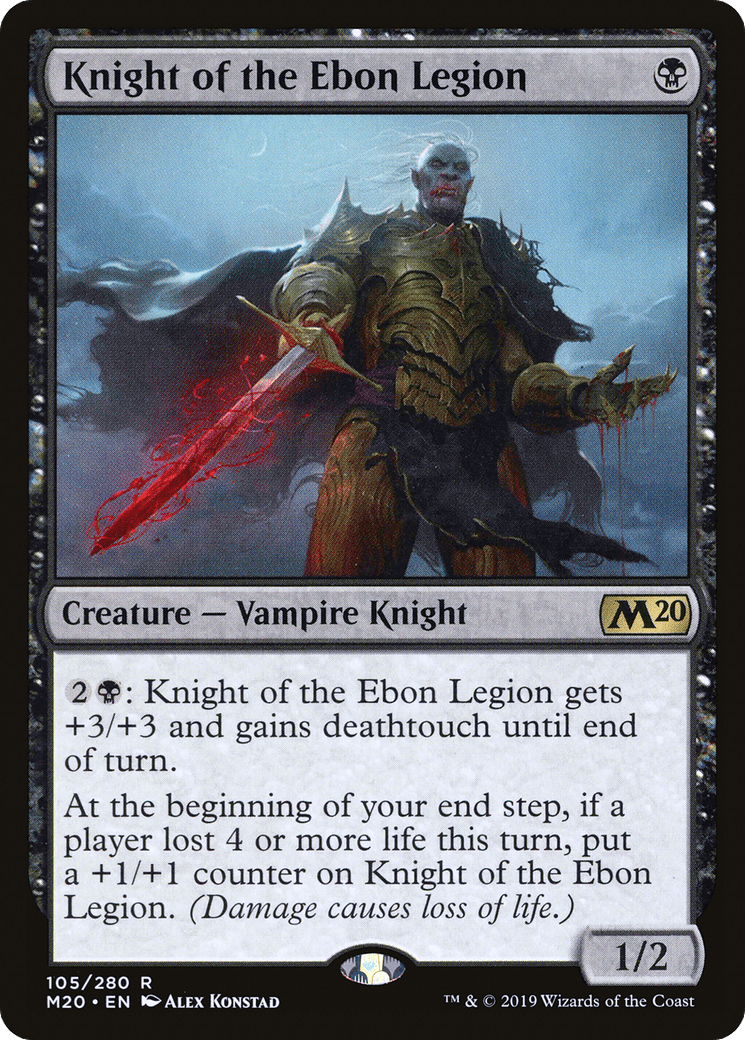

The Mirror
Matchup Feel:
Even
Sideboard Philosophy:
- Bounce Spells, Countermagic on the draw
- Sojourner’s Companion
General Game Plan:
Flying creatures matter the most here. Since both players have access to them, it’s mostly just up to who draws into more card advantage. Mulliganing to a Forging or a couple of Thoughts is an ideal strategy. Vault Skirge is also key here, because it negates their attacks. Focus bounce spells on equipped and larger creatures, and counter magic on their card advantage.


Blue Control
Matchup Feel:
Slightly Favored
Sideboard Philosophy:
- Anti-spot removal, counter spells
- Sojourner’s
General Game Plan:
You’re a fast aggro deck, and you need to be fast to make it in this matchup because you can’t go over their board wipes or potential planeswalkers. Use your card draw early and often, but don’t over commit to the board. Keep about half your ammunition in your hand and lay it down after the board wipe comes. In the meantime, just keep attacking to try and force their hand. Their counter magic is pretty bad, and they’re likely to hold it off for a Plating rather than counter a draw spell or a creature. Use that to your advantage by prioritizing casting creatures. Post board gets a little harder, but if you keep your mana up on key turns you can easily counter the board wipe.
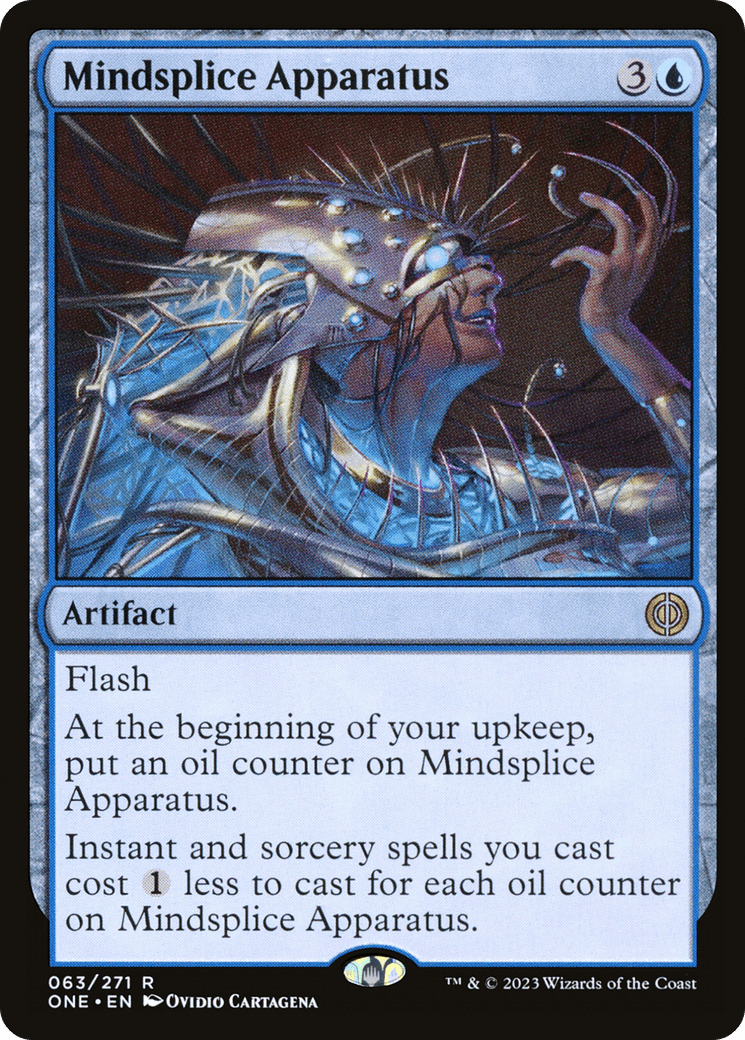

Creature Combo
Matchup Feel:
Unfavored
Sideboard Philosophy:
- Bounce spells, Grave hate if it disrupts their combo
- Extra drums
General Game Plan:
Regardless of which combo they’re on, they are going to be either a highly interactive deck like Goblins or a toolbox deck with easy access to Artifact disruption like Devoted Druid. This normally means you need to play cautiously, but playing cautiously means playing slowly and playing slowly means losing to a combo. It’s a lose lose situation most of the time, so your best bet is to just put your head down and race. If they interact, you’ve got the potential to dig out of it, and you can treat it like any other midrange matchup. These have always been tricky though, since Affinity is a known quantity that people tend to prepare for.
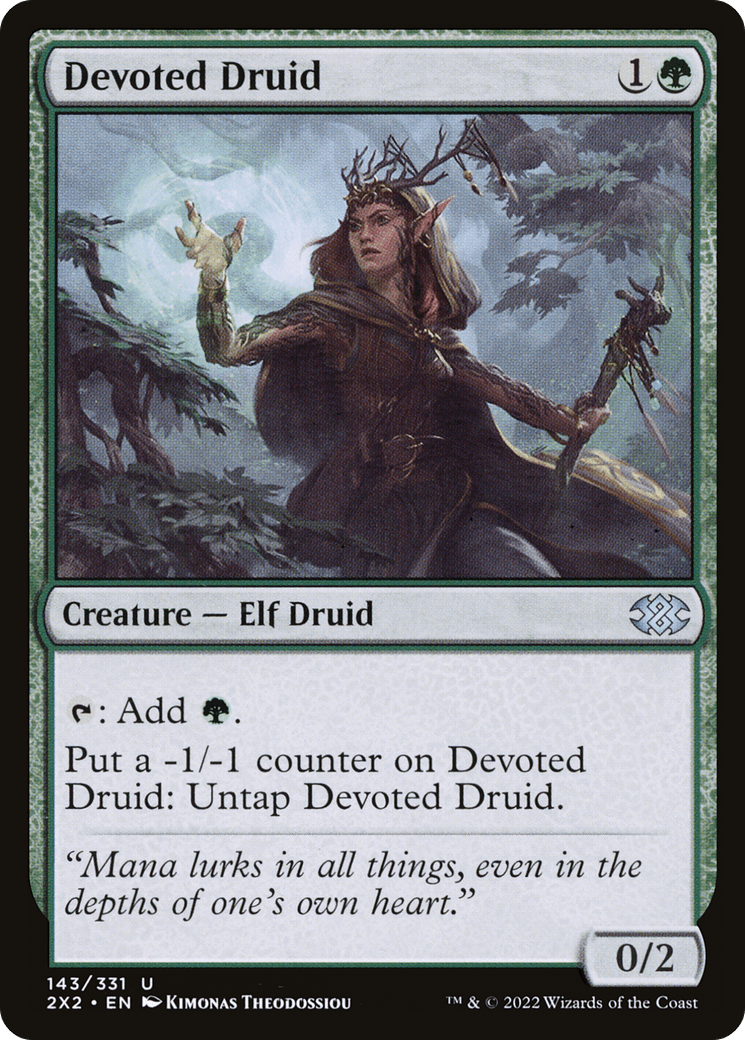
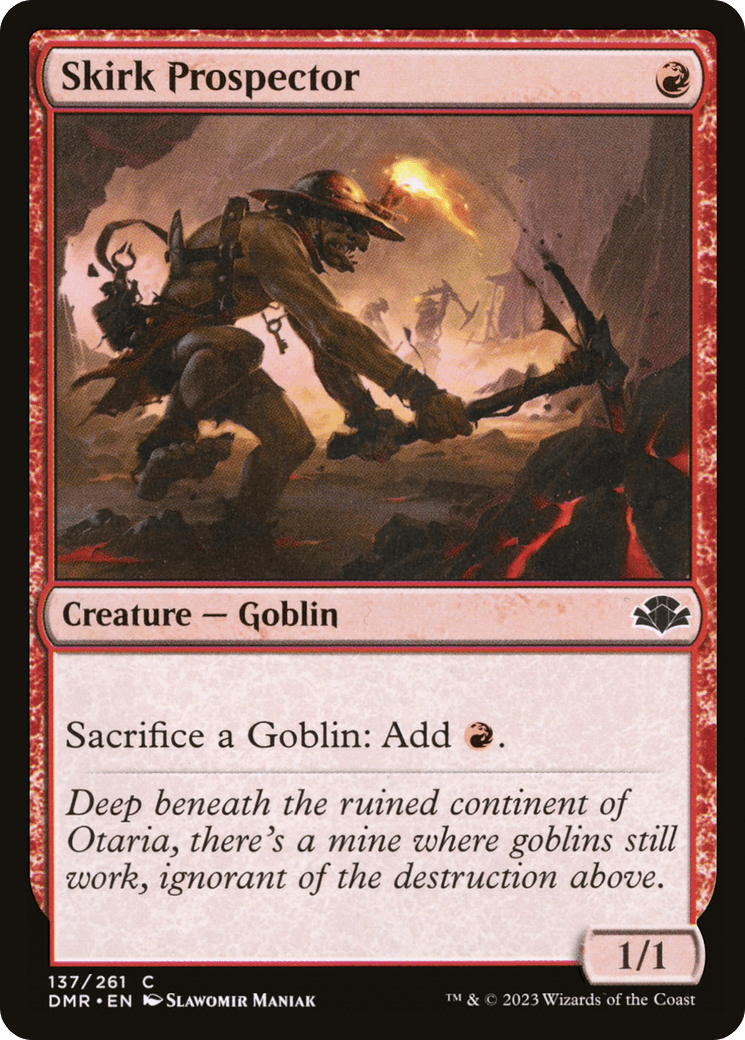
Graveyard Combo
Matchup Feel:
Slightly Favored
Sideboard Philosophy:
- Grave Hate, bounce spells
- Forging
General Game Plan:
This is another racing situation, and your race is often slightly faster than theirs. Dredge is easier than some of the other variants like Reanimator because their main threats are on the ground instead of in the air. It can be tempting to bring in counter magic, but this type of deck tends to have better play against counters than bounce spells. Unless you’re against Oops all spells, then you bring in the counters. In either case, you need to be applying pressure while holding up interaction for whatever they’re trying to cheat out.


Prison
Matchup Feel:
Very Unfavored
Sideboard Philosophy:
- Counter Magic, alternate win conditions, grave hate if it matters
- Sojourner’s, Trim plating, Trim Forging
General Game Plan:
If this is a deck that prevents combat, you cannot win the game. The moment you see a means to recur a Kami of False Hope or Martyr of sands, just pack it in, you’re cooked. Game one, race until you’re prevented from doing so; sometimes you can get there. You can try to counter the recursion engine in the post board games, just keep in mind that you need a good clock to back it up and your draw spells are more or less meaningless. It’s usually best to save yourself the frustration and scoop it up to get lunch or whatever instead of trying to grind it out hoping to hit the 1%.
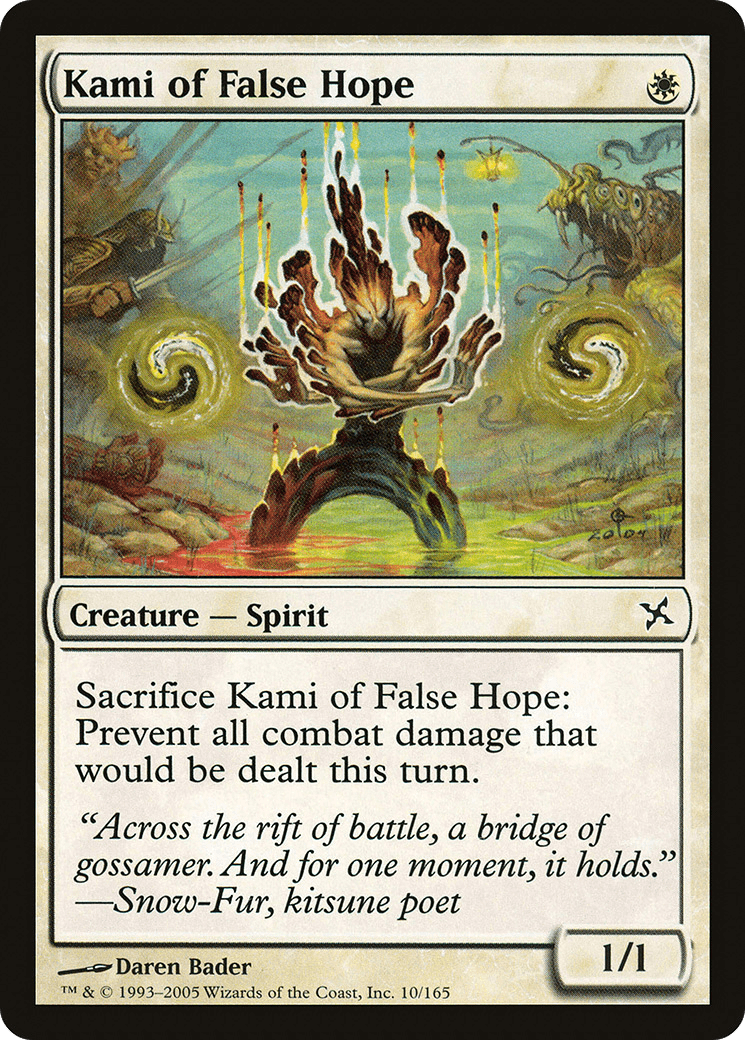
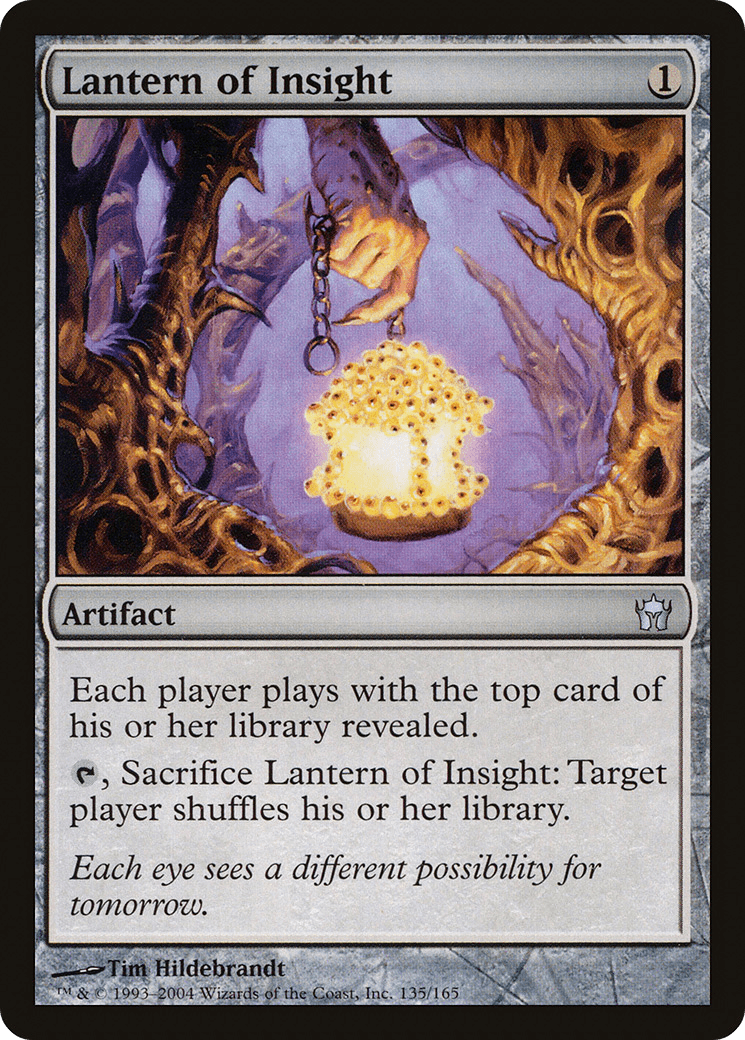
Classic Midrange
Matchup Feel:
Slightly Favored preboard, Slightly Unfavored postboard
Sideboard Philosophy:
- Anti-Spot Removal, grave hate if they have a graveyard engine like Lurrus
- Vault Skirge, Trim Signal Pests
General Game Plan:
Depending on their deck configuration, this could be a simple one or a slog. Most black based discard decks you’re pretty good against, it’s the combination of discard and endless cheap removal like Lightning Bolts coming from a Dreadhorde Arcanist that really mess you up. You can usually out race them if you rely on your draw spells, but in post board games they usually also have access to a sweeper of some kind on top of all the other interaction that they’re packing. Forging is the best spell for this matchup, so mulliganing to it is better than keeping a loose and slow 7.
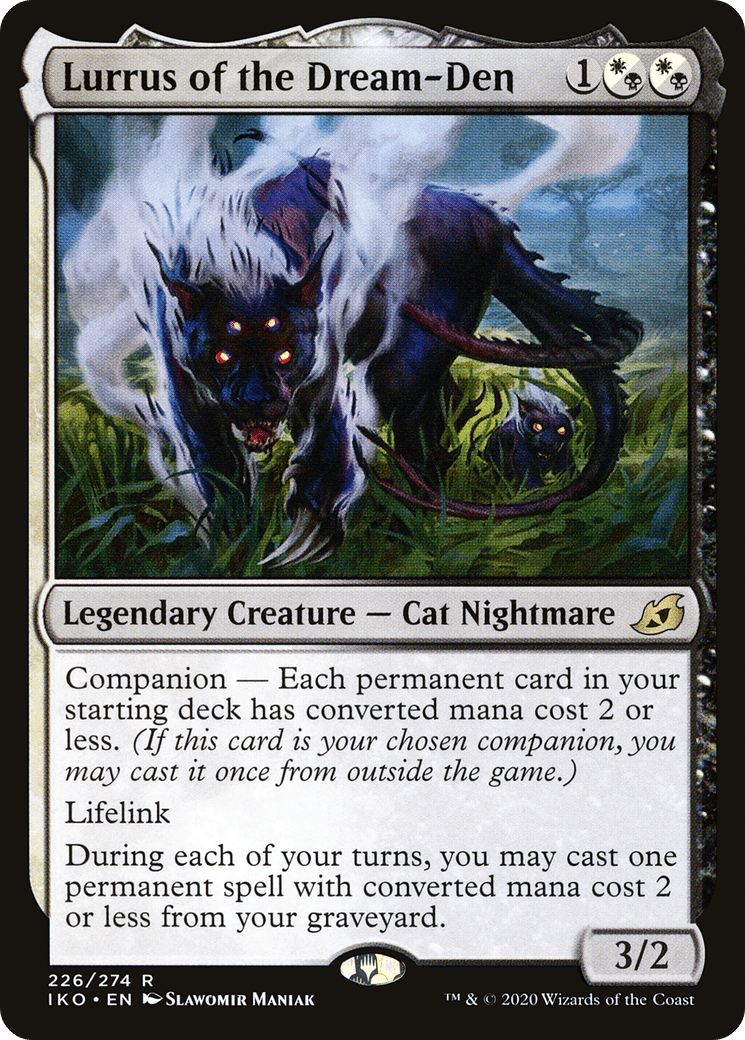
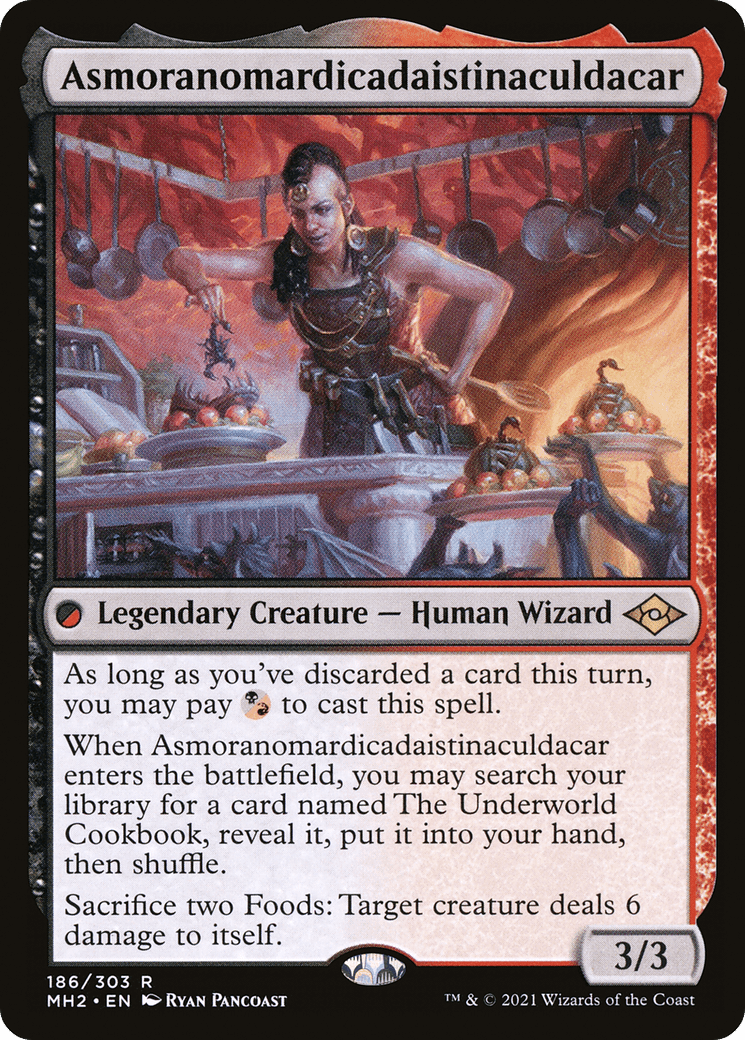
Interaction Checks
Matchup Feel:
Unwinnable
Sideboard Philosophy:
- Dont
- It ain’t worth it chief.
General Game Plan:
Cry, complain, cry more, die mad.
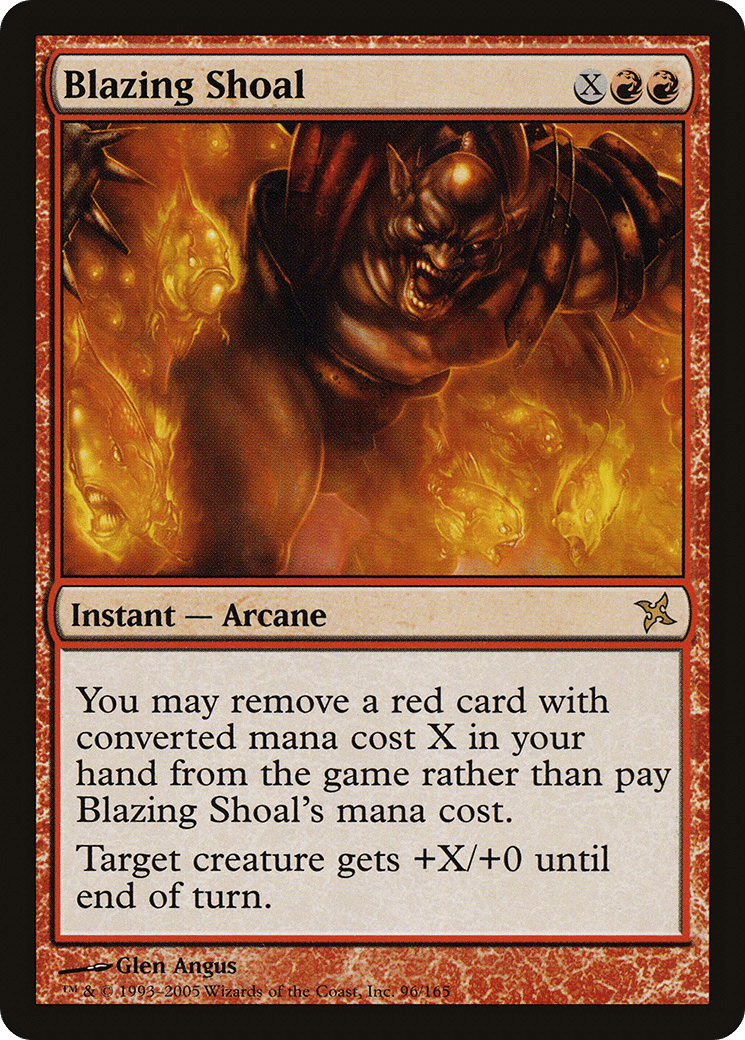
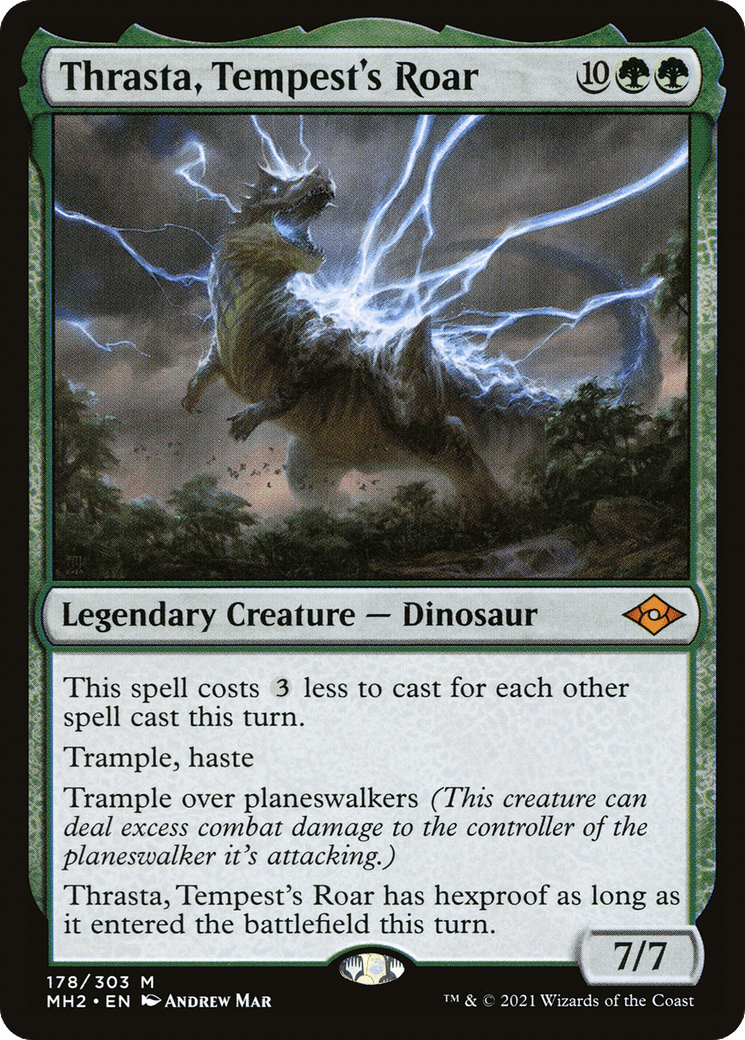
How to Combat Hate
When playing an all-in strategy like Affinity, you need to be aware of the types of cards that people are going to be playing to defeat your game plan. At the moment, the hottest and most prolific pieces of tech are Energy Flux and Fade from History, which both essentially wrath your board including a good number of your lands. Energy Flux is especially scary because it ensures that you cannot maintain a single permanent for more than one turn cycle.
Regardless of the specific hate piece that your opponent will be bringing in (and they definitely WILL be bringing cards in for you), you have options both in deck building and game play for navigating around these sorts of devastations. You can only really be prepared for so much, but each method of disruption that your opponent can be packing has an out associated with it.
Stax Pieces
Stax pieces are those that prevent you from playing the game as soon as they come down. Your Energy Fluxes, your Stony Silences, your Kami of False Hope locks, etc. The one thing in common with the greater percentage of these is that they are perpetuated by an Enchantment. Flux and Silence are Enchantments, as is Abiding Grace out of the Kami fog decks. So the simple answer here is to be able to combat an Enchantment. Stern Dismissal, Machine over Matter, and Void Snare are common short term solutions that you could include to dispatch the Enchantment when it comes down if you’re close to winning. There isn’t a lot outside of bounce and counter magic though once you’re in the match. The best way to beat this type of card is to know about it ahead of time and adjust your deck list accordingly.
If you’re walking into a field of Stax pieces, you need to rely on cards that are not Artifacts to get ahead of the game. Whether this means increasing your Basic Island count so that you have mana to pay for Flux, sideboarding into an artifact-adjacent card like Gearseeker Serpent, Disciple of the Vault, or Mirrodin Beseiged (the card). You also have the option of including creature lands that aren’t legally Artifacts when the Energy Flux trigger resolves. Blinkmoth nexus or Mishra’s Factory are both very cheap to activate and can attack what may possibly be an empty board if your opponent is anything like mine usually are and desperately mulliganed to the Flux. There are absolutely options for what feels like a hopeless situation, so do not be put off just because people have a strong card against you.

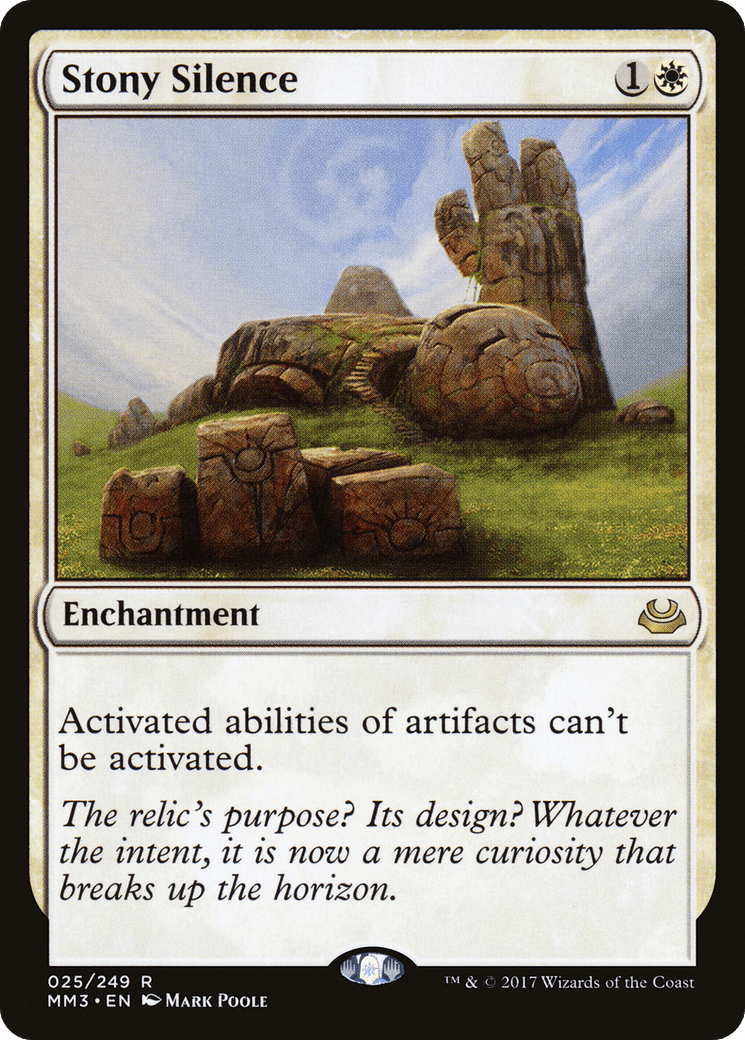
Board Wipes
Board Wipes are much easier to navigate as long as you anticipate them. They don’t require any additional build arounds, though if you’re running into a lot of Fade from History or Cleansing Nova, you may want to lower your Artifact Land count a smidge. Basically you play around this type of card the same way that you would in any other aggro deck; by not committing fully to the board and sandbagging cards in your hand. You’re a deck full of draw power, use that to your advantage and don’t waste turns casting a Forging the Anchor on when you’ve already got a full board and full hand. Affinity is great at reloading, so to say, which means that you can fire off a big volley of Artifacts, have them get wiped, and rebuild the next turn if you hold back a bit initially. Save at least one Drum effect in hand to play after the first board wipe, would probably be my best advice.
Some cards to include in your list should Board Wipes be a huge issue for you would be additional counter spells like Spell Pierce and Metallic Rebuke. Some of those Artifact-adjacent cards like Blinkmoth Nexus and even Karn, Living Legacy are also great for this sort of situation.
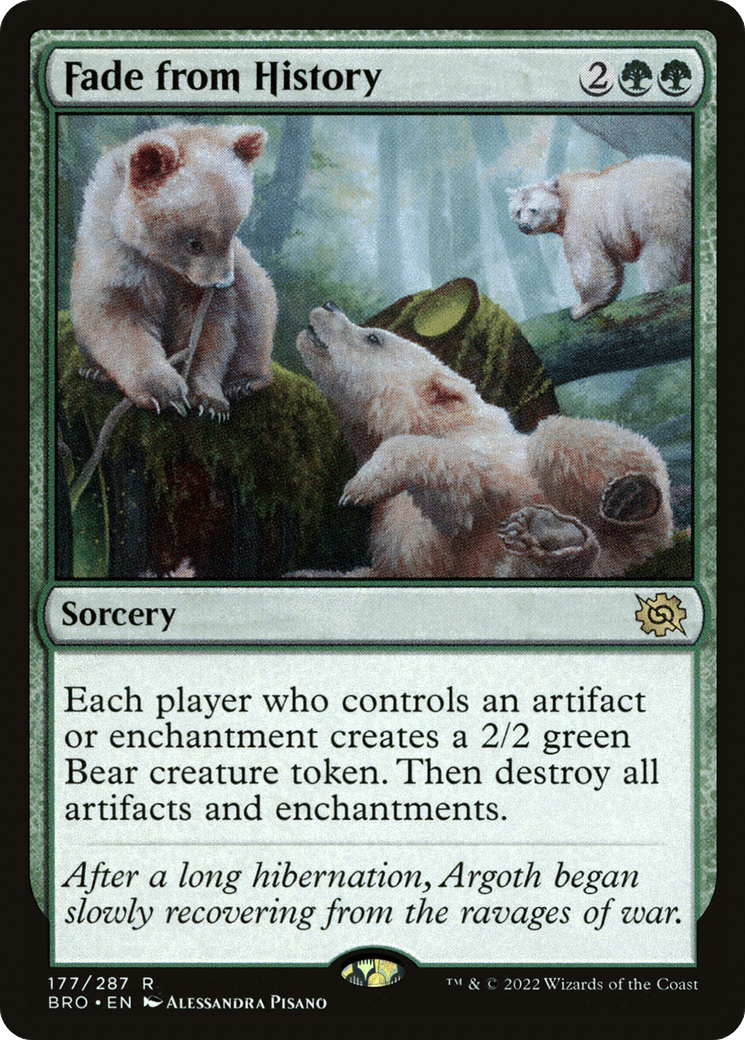

Spot Removal
Some decks in the format like Mono Black and Burn are loaded up with spot removal to take your small creatures out one by one before you get the chance to snowball with them. Like with board wipes, this game plan doesn’t require any additional counter measure in your deck’s construction, just pattern recognition and being cognizant that that’s how the opponent intends to win the game – is by slowing you down. You can counter this by slowing yourself down and building your resources in such a way that they have a more difficult time touching them. Keep creatures in your hand until you can cast six cards in one turn, even if doing so would mean leaving damage on the table in the early turns. Or if you’re against a heavy discard deck, cast everything as soon as you draw it and get to beating down because your cards are more valuable on the table than in your hand.
Some cards to include if this is the sort of field you find yourself in are Etched Champion, Sai Master Thopterist, Thopter Spy Network, or The Antiquities War.
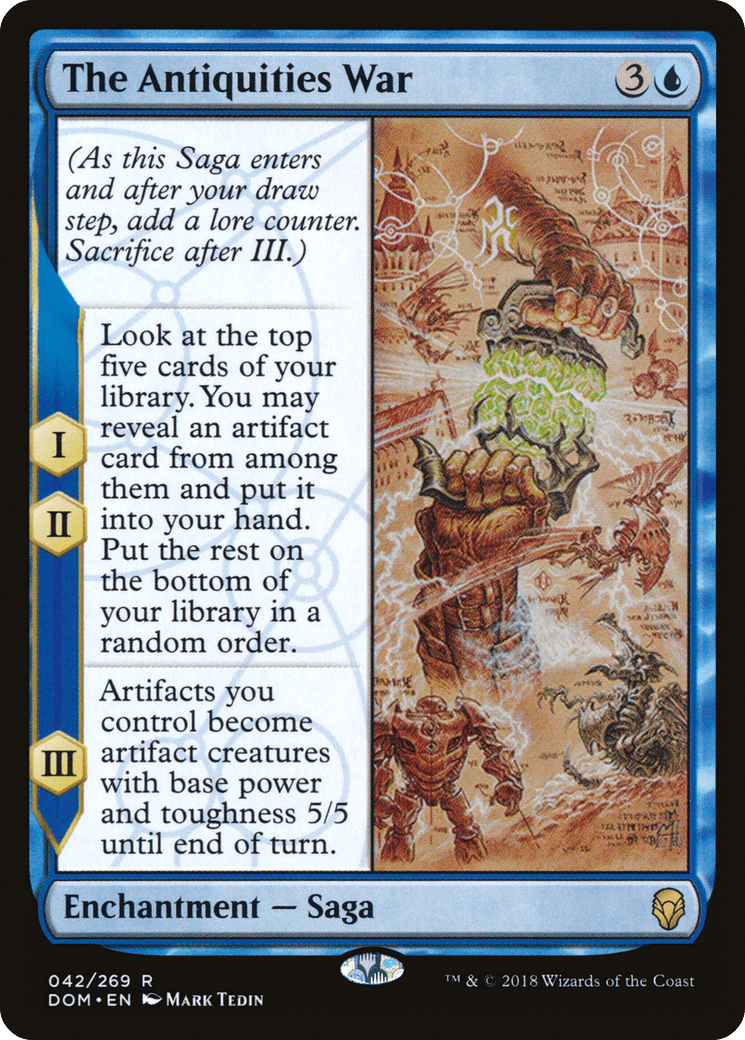

Tips and Tricks
- It is often correct to hold back Moonsnare Prototype for up to several turns if you draw it outside of your opening hand. The channel ability is a combat trick that cannot be interacted with, and if you have a spare 5 mana laying around, it’s worthwhile.
- Use the Casts to bait interaction and counter magic before trying to resolve a Forging the Anchor, because Forging is always the better return on investment.
- Any hand with Ornithopter, Springleaf Drum, Artifact land, and a 1 drop is keepable. It feels like you need a lot to get this deck rolling but you really don’t.
- Tap Moonsnare Prototypes before Springleaf Drums when given the opportunity. Springleaf makes black mana for Plating’s attach effect, while Prototype only makes colorless.
- Stacking Signal Pests is often a better and more reliable win condition than relying on Cranial Plating, but you should still run out the plating anyway because it’s such a removal magnet.
- Look at each of your top decks for a second when it feels like you’ve just gotten slightly behind on the board. This deck has a couple of combat tricks available, so bluffing them is a good way to sneak a percentage point or two from the opponent. If you see that your top deck is a land and just immediately put it into play, you’re leaving cash on the table.
